THE TRINITY VOICE


NEWS LIFESTYLES OPINIONS
Elon Musk’s Starlink program brings promise and peril to global connectivity.
The strange world of decisions, regulations and outrage over banned books.
Academic competitiveness helps no one, harms everyone.


PRO/CON
After just 3 years running, Morgan Cox commits to run in college.
SILVER
SILENT SCREEN TO
COIN
Anna May Wong becomes first Asian American on US currency
SPORTS Page 25 Page 18 Page 16 Page 1O Does a rmative action in admissions help diversity or discriminate unfairly? Page 8 December 2O22 Volume 25 Issue 3 Trinity Preparatory School 57OO Trinity Prep Lane Winter Park, FL 32792
Access via QR code on inside cover.
TABLE OF CONTENTS
e Trinity Voice is a member of the Florida Scholastic Press Association and the National Scholastic Press Association.



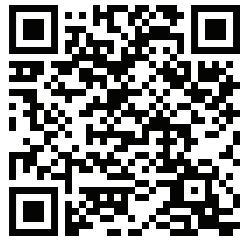










e Trinity Voice is produced by the newspaper/journalism class at Trinity Preparatory School of Florida. Editorials represent the opinion of e Trinity Voice writer and are not necessarily the views of the administration, faculty, or Board of Trustees of Trinity. e Voice welcomes letters to the editor and freelance articles or photography. All submissions become the property of e Voice. Please send all correspondence to 5700 Trinity Prep Lane, FL 32792. e Voice may also be contacted via phone at 407-671-4140 and via e-mail at voice@trinityprep.org. For information regarding the purchase of advertising within e Voice, contact us by one of the methods mentioned above. The Voice is a monthly publication during the school year (with the exceptions of November and January).

December 2O22 Table of Contents
VOICE@TRINITYPREP.ORG THETRINITYVOICE.COM @TRINITY_VOICE @THETRINITYVOICE “THE TRINITY VOICE” Cover Photo Andrew Edwards Scan here to read about Ana May Wong on the quarter dollar Opinions Lead Ed Mental Health 17 16 Cross-Country Star Sports 25 Soccer Player Features 26-27 News French Exchange O4 O5 Grille Overcrowding Lifestyles Online SAT O7 Starlink O8-O9 Burnout 13 12 iPhones 14 Banned Books 1O-11 Overstimulation Movie Reviews 15 Pro: A rmative Action 18-19 Con: A rmative Action 2O-21 Pro: PEDs 22 Con: PEDs 23 Death Penalty 24 Page 24 Kelsey Wang Page 25 Anna Miliotes
STAFF
Editors-in-Chief: Marcos Membreno, Jack Ververis
Managing Editors: Ava Savino Sarah Zehnder
Copy Editor: Kaylee Ortega
Layout Editors: Amy-Ruth Gyang, Reese Taylor
Social Media Editors: David Bryskin, Ana Carolina Marques
News Department: Iris Lei (Editor), Julian Sealy, Alec Diaz, Karthik Stead, Laziza Talipova
Opinions Department: Abby Hernan (Editor), Reese Taylor, Amanda Rose DeStefano
Focus Department: Peyton Alch (Editor), Fay Zhao, Lucy Chong, Zach Kleiman
Lifestyles Department: Taylor Riley (Editor), Jack Aaron, Kaylee Ortega, Boaz Kim, Victoria Berube, Sammy Lou
Sports Department: David Steinberg (Editor), David Hull
Podcast Department: Aetant Prakash (Editor), Mohil Kapadia, Sreekar Nagulapalli
Graphics Department: Amy-Ruth Gyang (Editor), Austin Yuan, Andrew Edwards, Caden Liu, Lia Garibay
Photo Department: Anna Miliotes (Editor), Andrew Edwards, Raheel Patel, Olivia Kortman, Olivia Prince
Fact Checking Editors: Boaz Kim, Julian Sealy
Business Manager: Sreekar Nagulapalli
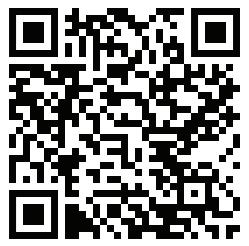




Adviser: Erin Miller
Saint Talk

This Month’s Podcasts:
Blurbs by Aetant Prakash and Mohil Kapadia Graphic and Photo by Lia Garibay and Olivia Kortman
Ep.4 - Acting for the Environment
Mohil Kapadia talks with Dr. Smith, the AP Enviromental Science teacher, and Lainey Wilemon about enviromental activism. They discuss the activism against the preservation of historical artifacts, the e ects of violent vs. nonviolent protests and more.
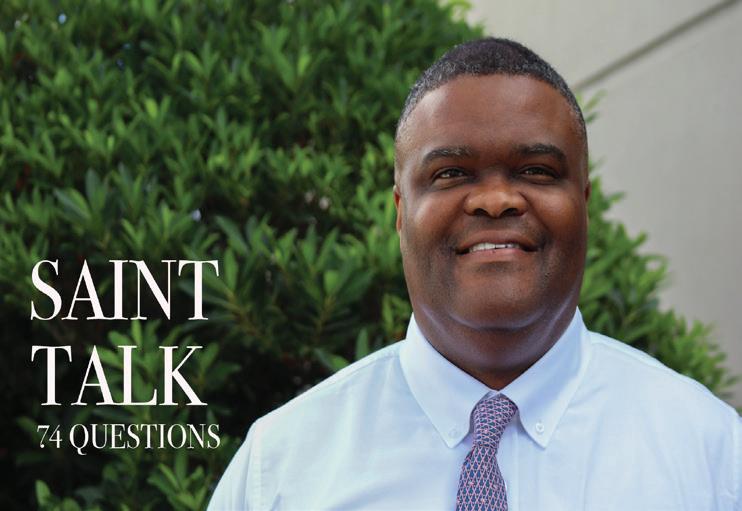

Ep.5 - 74 Questions with Mr. Lawson
Inspired by Vogue’s “73 Questions” series, Aetant Prakash asks Mr. Lawson 74 questions about his life. Hear about everything from his Starbuck’s order to whether or not he owns the school.
3 December 2O22 Sta /Podcast
FRENCH EXCHANGE PROGRAM TAKES FLIGHT

 Article by Laziza Talipova
Photo by Olivia Prince
Article by Laziza Talipova
Photo by Olivia Prince
At the Notre-Dame Les Oiseaux school in Verneuil-sur-Seine, France, the French students are very much used to animals. On a typical school day, chickens and goats ll the campus as students prepare for classes. Now, these students get to see Trinity (but with no animals of course). e French exchange student program allows Trinity and students from Notre-Dame Les Oiseaux to see new places and to engage with new people. e program was planned to begin well before COVID-19, but it was postponed due to the pandemic.
World language department chair and French teacher Vanessa Spallone regarded this program as an excellent opportunity for her students to interact with the French exchange students, visit France to explore new cultures and master the language. e exchange students visited on Oct. 26 and left on Nov. 1. Spallone, French and Spanish teacher Maria DeCoster, Head of School Byron Lawson and the Trinity French students will be visiting France over spring break to experience the culture and to stay with host families.
“I want my students to practice their French as much as possible in real-life situations,” Spallone said. “ e idea of them staying with a host family, and especially going to a French school and experiencing what the life of a teenager is in France was so appealing.”
Spallone took French students on eld trips to France in the past, but she admits it was centered around tourism while her goal with this recent program is to let her students interact with people and form new friendships. She found a system that nds schools with similar pro les and matches the schools together in
order to make the transition smooth.
Spallone said that she was pleasantly surprised many people were interested in taking part in the program.
“Sixteen students are hosting this year and to say the truth, I thought that I would have far fewer,” Spallone said. “So I was really excited to see a high level of interest.”


Twenty-six French students participated in the exchange program, but Trinity had 16 students. Because of this, other non-French Trinity students get the opportunity to host the students and be their host family. Even though there are some non-French students hosting, it still gives the French students a glimpse of their lives and to practice their English.
On the rst day the French students shadowed their hosts and had a tour of Trinity to see the classes. In Spallone’s French class, the students prepared a slideshow of questions to ask the French students.
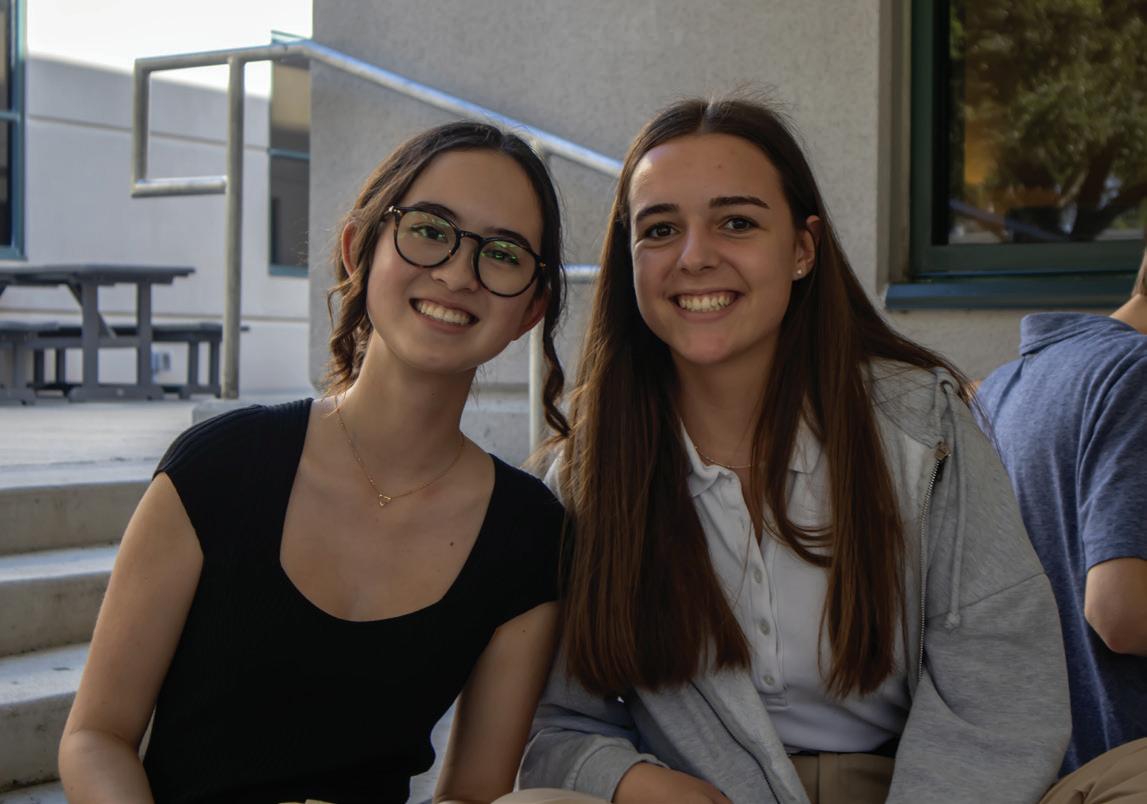
“We prepared a series of questions to ask them and we're going to brainstorm about the things that really interest us about them,'' Spallone said. “It was very much student driven.”
Outside of school, the French students visited places like Daytona beach, Disney and Universal. Each host family can choose to go somewhere fun with the exchange students and include them in family activities.
“ ey embark on the bus and they spend the day having fun,” Spallone said. “So there's Cape Canaveral, St. Augustine and Daytona Beach. ey're also going to Universal Studios… I know some students are going to Halloween Horror Nights, watching some football games at school and even bowling.”
Freshman Olliver Polsinelli is hosting French exchange student Louis Zannier. Polsinelli wants to show Zannier how American culture di ers from French culture and let Zannier explore new sights. Polsinelli will also bene t from this experience and progress in the French language.
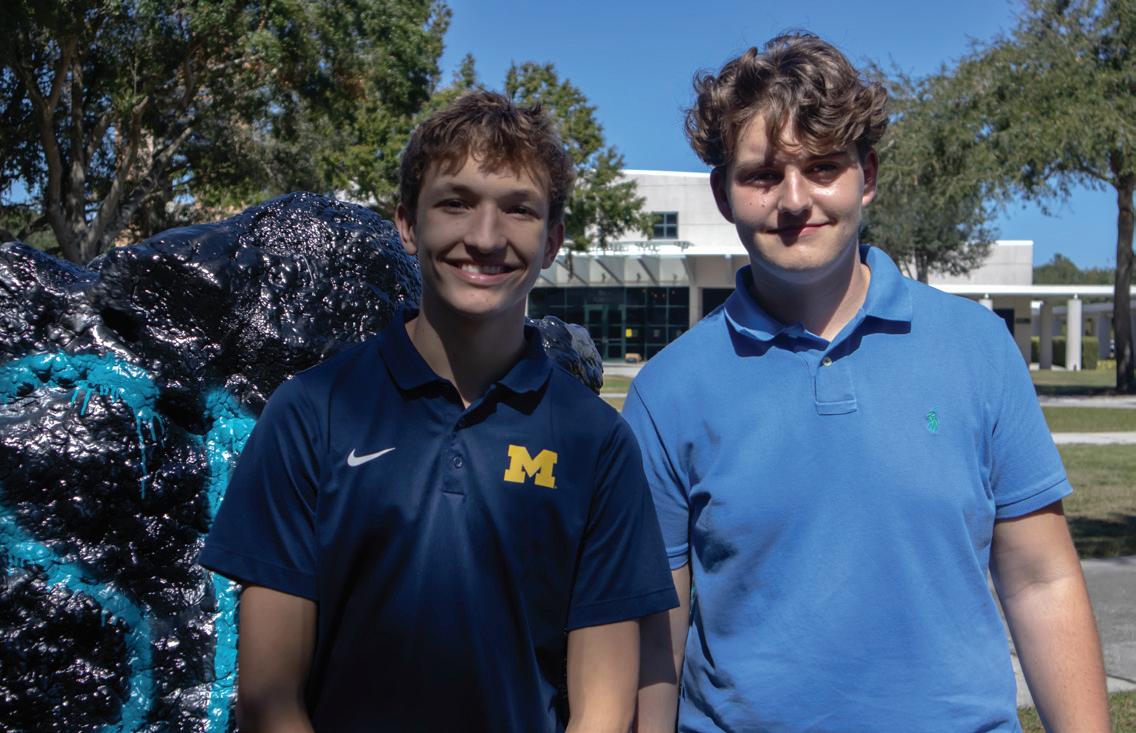
December 2O22 News 4
Freshman Olliver Polsinelli poses for a photo with French exchange student Louis Zannier.
Junior Claire Pankros eats lunch with her French exchange student Emeline Quemerais.
BLAST TO THE PAST
Article by Julian Sealy Photo by Anna Miliotes
Whether it’s having a friendly conversation with Food Director Christopher Behrens while waiting for a quesadilla, socializing with friends in line or enjoying the various di erent options for breakfast and lunch, students certainly enjoy the many aspects of the Grille.
e Grille serves over 700 students daily.
With this large number of students plus a lack of sta , the Grille has experienced overcrowding and long lines that have frustrated some students.
Behrens said that without that extra sta member or two working back, there’s no way to open up some of the new additions he wants to.
“It’s been chaotic because we can’t get somebody to stay with us for more than ve days,” he said. “Whenever we get somebody full-time, I want to open up a soup station and add more to the entrees because we’re not just cheeseburgers and hamburgers, but we can’t do that or get it less crowded here without [someone] to help.”
get a body that can’t happen,” Behrens said. “Once we get somebody we’ll be able to bring that back and add some of the new stu .”
Upper School Dean of Students Kyle McGimsey said the very beginning of lunch is when the lines are the most chaotic.
“[ e rst 10 minutes is] the moment
help with the overcrowding. McGimsey said the purpose of these additions is so students can get in and out of lines faster, but student cooperation is the biggest way to help.
“Staggering times when students come to the grille has been a big help,” McGimsey said. “Waiting 10 or 15 minutes and coming to lunch a little bit later will make those lines much shorter.”
According to McGimsey, students can also help shorten lines is by not bringing backpacks into the grille as they take up space where more people can be standing. He also said not waiting in line if you’re are not getting food makes more room as well.
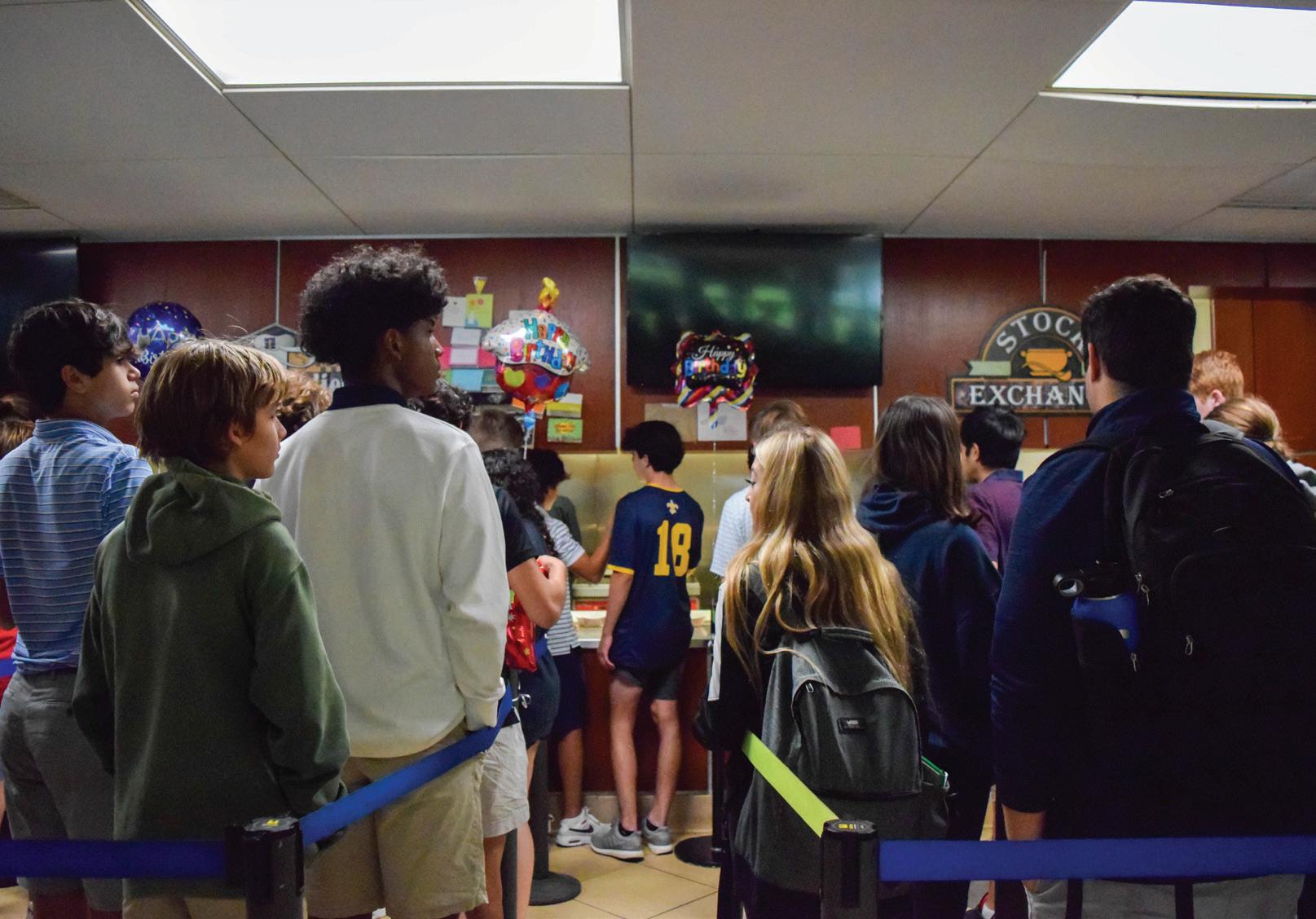
Due to con ned spaces, the grille has sectioned o queues for the various food options. Students rush with their backpacks to make it rst in line.
when all of your lines are getting the longest, and that’s been one of the big things we’ve been trying to address is how to speed those lines up,” McGimsey said.
“Some of the things that we really encourage students to do is to pay with their ID,” McGimsey said. “ ere’s not a lot of space to begin with, so anyway we can move people faster into the table area its better.”
Behrens said he also wishes to bring back the beloved panini station and salad bar.
“ e plan was after COVID settled down to bring back the panini station, but if we can’t


Faculty and sta have recently created more space in the grille by adding two di erent lines for quesadillas and entrees. e grille sta has also added more pre-made items to
Behrens said although chaotic at times, the interaction with students outweighs the stress the work brings.
“It’s fun, it’s fast-paced, it’s crazy, but I know what to expect,” he said. “Chatting with you guys is what keeps me back here.”
December 2O22 News
Grille hopes to bring back fan favorites, must overcome large crowds and lack of sta
David
Louis



Victor B. Thomas, M.D.
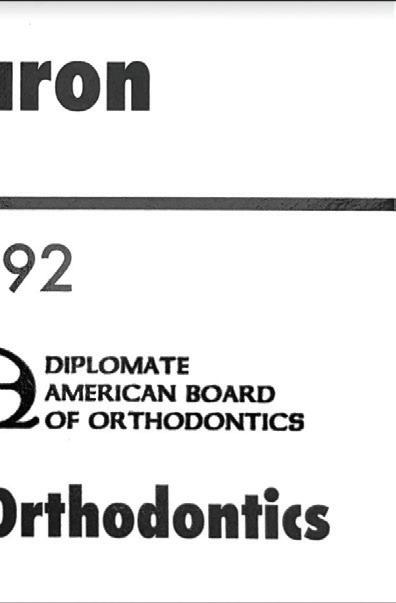



Andrew J. Schneier, M.D.



Justin D. Marsh, M.D


Lynda Z. Kleiman, M.D.
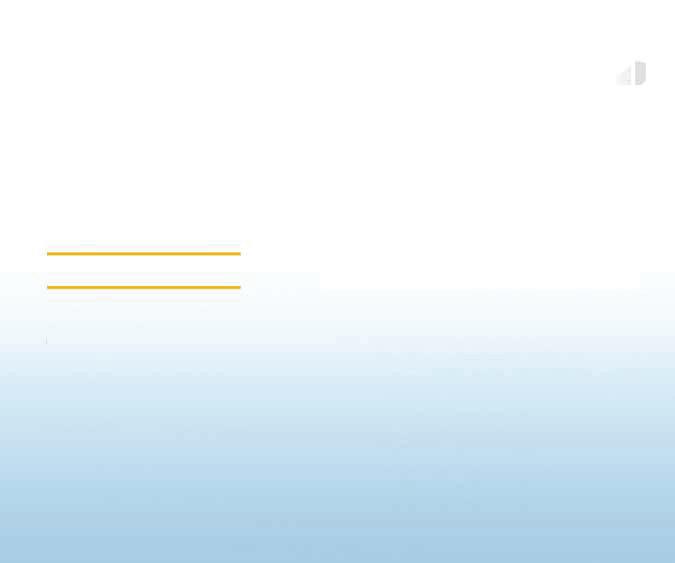
Jerry N. Shuster, M.D.



Kris Ann S. Humphrey, M.D.


Hamza M. Pasha, M.D.


December 2O22 Advertisements 6 L o o k i n g f o r h i g h s c h o o l s t u d e n t s i n g o o d a c a d e m i c s t a n d i n g , a p a s s i o n f o r t e a c h i n g , a n d a w o r k i n g i n t e r n e t c o n n e c t i o n T u t o r s w i l l b e g i v e n c o m m u n i t y s e r v i c e h o u r s f o r t h e i r t u t o r i n g s e s C A L L I N G T U T O R S ! Sign up at www study city com/join our team S T U D Y C I T Y 1 0 1 @ G M A I L C O M S T U D Y C I T Y C O M EYE PHYSICIANS of Central Florida Leaders in Pediatric and Adult Eye Care www.eyephy.com Maitland MetroWest 407-767-6411 Your Sight. Our Specialty.
Gol
Robert S
d, M.D., F.A.A.P.
B . Auerbach, D.O.
C Blumenfeld, M.D., F.A.A.P.
A Division of Florida Pediatric Associates, LLC
EXAMS NEAR, FORMATS UNCLEAR
Students oppose the trend towards online testing
Article by Emily Lopez Graphic by Austin Yuan
Recently, the College Board announced that the SAT, one of the nation’s most commonly used college entrance exams, will become completely digital in 2024. is signi cant change will likely result in a similar shift in assessments at the highschool level.



e SAT and other standardized tests, like the ACT, will soon switch entirely online because of the easier production, distribution and grading process.
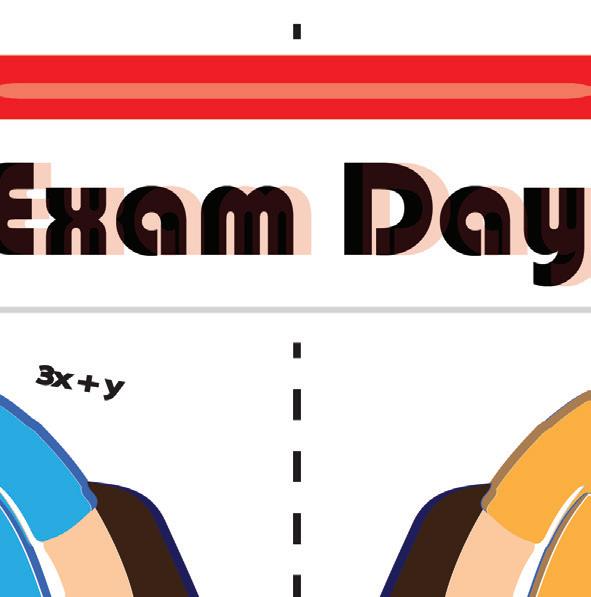

However, many students are worried about how the transition from paper to digital exams will a ect their overall grades and test-taking skills, especially with mid-semester exams at Trinity right around the corner.

“Some people might have become accustomed to on-paper assignments and assessments,” Anand said. “Now as we get older, we switch to more online assessments, and that may make [the students] more anxious because it’s a new medium.”
A study at the American Institutes for Research examined whether the drop in test scores could be explained by di erences in test formatting. ey found that students who took the PARCC national academic test online scored signi cantly worse than their peers who took the same exam on paper, performing as if they had lost months of prep time or knowledge on the subjects.
circle and highlight answers, and return to questions you may have previously answered.













“During COVID-19, we switched everything to the computer and were able to nd a lot of nice resources and extensions that made it possible to annotate online, but I didn’t feel like we were getting the same kind of experience,” Schuttler said. “ at physical aspect of your education is absolutely necessary.”
e Director of Learning and Instruction Dr. Stephanie Dryden agrees that the online experience can’t compare to the original paper and pencil concept that nearly every student is used to.
“Although there are attempts to make replicas of these capabilities, it’s simply not the same,” Dryden said.
“It’s a di erent level of engagement with material.”



























“Now that there is an increase in online testing throughout most schools, I de nitely have to start thinking about how this will a ect me,” senior Victor Wang said.
change
Preparing for an assessment that determines a major portion of a student’s grade is already stressful, however the testing medium can add a complicating factor.
Although computer-based tests can make the grading process more e cient, they can also signi cantly in uence a student’s test performance. According to the Partnership for Assessment of Readiness for College and Careers (PARCC), students obtained higher scores on English/language arts paper and pencil tests compared to computer tests.
“I always felt comfortable taking a paper test,” Wang said. “It’s kind of a mental thing, but it’s also just being able to annotate the papers and not having to deal with tech issues.”
Eighth grader Ashwin Anand said that some students are visibly stressed when it’s announced that the test will be online instead of on paper.
While online tests allow teachers to ditch hand grading, some teachers still acknowledge that not all students are comfortable with online assessments. English teacher Hannah Schuttler takes this into consideration.
“I always like to give students the opportunity to pick between an online test or an on-paper assessment,” Schuttler said. “Some other teachers I talk to are a ected by the grading processes, but they don’t vary too much for me. And I think some students feel more comfortable taking quizzes or tests if they can pick which type to take.”
Schuttler explains the steps that her and her colleagues took to adjust to online learning, using tools that re ect the ability to annotate,
Dryden said that most students’ performance will vary by their educational background, and the resources available to them can alter their test-taking abilities.
In other words, students familiar with using technology in the classroom may have an easier time taking an online assessment or exam.
“When it comes down to it, [students] are just more practiced taking assignments and assessments on paper than anything else,” Dryden said. “ e majority of students don’t have access to those other capabilities at such a young age.”
e renovation of the SAT is in uencing many schools to experiment with online testing, however that doesn’t necessarily mean the students are ready for it.
“Being able to annotate the paper, not worrying about formatting or tech issues, the ability to show all your work… All these things added up are just what makes me more successful when taking paper tests,” Wang said.

News 7
December 2O22
LINKING THE STARS WITH STARLINK

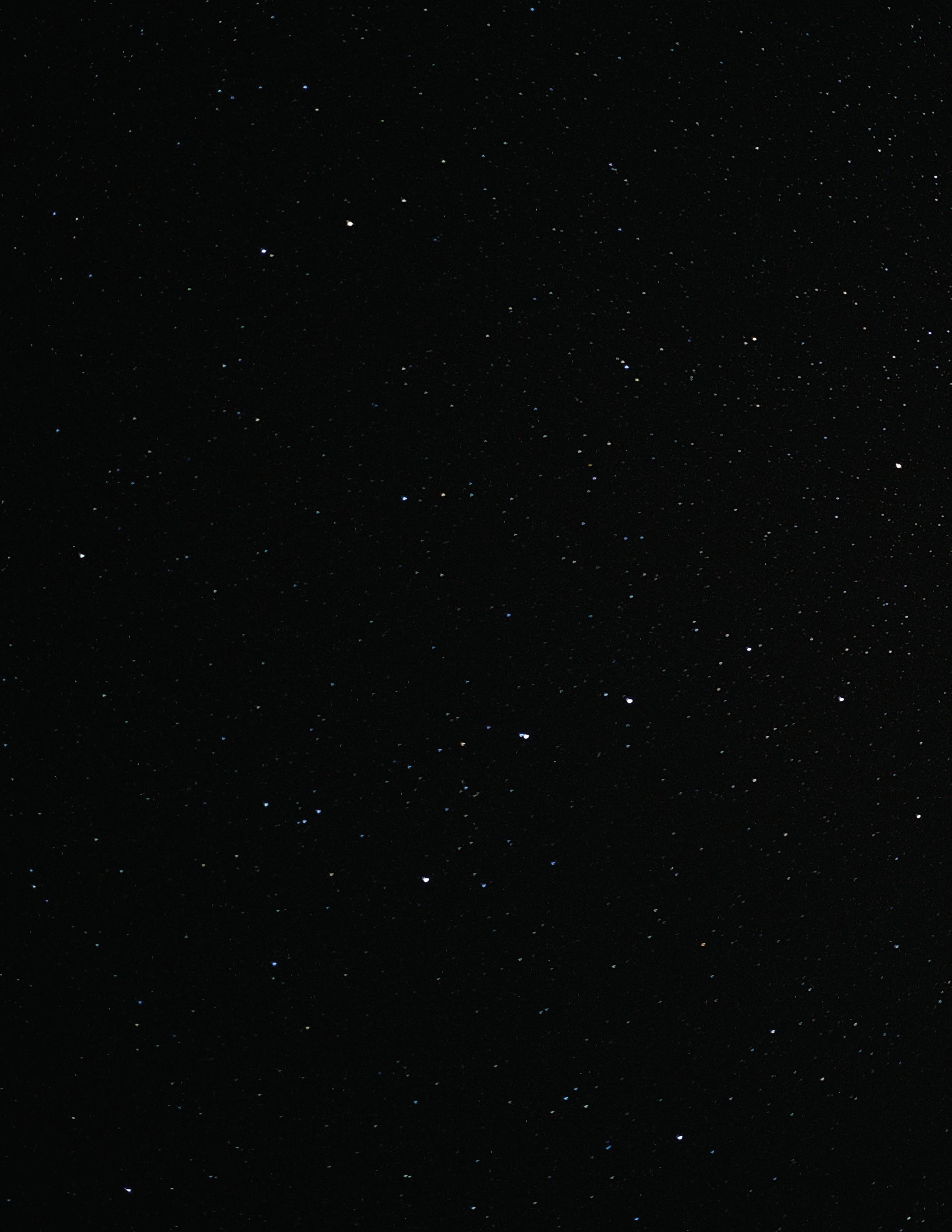 Article by Jack Aaron Graphic by Austin Yuan
Article by Jack Aaron Graphic by Austin Yuan
If there is one thing Elon Musk is known for, it is being the CEO of Tesla, Chief Engineer of SpaceX and new owner of Twitter after a $44 billion deal. And now, his very own satellite company, Starlink, controlled by SpaceX, could alter the course of our future.
According to Starlink’s website, its goal is to provide the entire world with internet, no matter where people are. is means that whether in a rural town or in the middle of a hurricane, everyone will be connected to the internet. In order to do so, Starlink must send up a large amount of satellites to cover the broad orbit of the Earth.

Starlink has been sending up satellites since 2019, and they currently have over 2,300 satellites in orbit. eir goal is to reach 12,000 satellites, but may later extend that in the future to 42,000. If Starlink wants to reach this goal, they must rapidly launch satellites. Just last month on Nov. 1 at 9:41 a.m., SpaceX launched a Falcon Heavy rocket, for the purpose of launching two more satellites. Seventh grader Max Mernard was one of the many Trinity students who watched the launch during school.






“I feel it’s a very generous and important thing to do,” Mernard said.
Trinity’s Chief Technology O cer Alex Podchaski has years of experience with satellites, as well as Musk’s Starlink. Podchaski is aware of
Starlink’s goals, bene ts and negative impacts on our environment.
“Starlink is designed to be a low earth orbit, internet communication system, that provides internet to places which either normally wouldn’t have it, or provides a way to link places that have fewer options,” Podchaski said.
Starlink plans to provide internet to the entire world and globalize by 2023. However, the globalization of Starlink will not make other internet companies obsolete because Starlink is not focusing on the areas already covered with internet. A goal as strenuous and complicated as this may bring doubts to some about their globalizations, however Podchaski sees that this is a feasible aspiration. Podchaski notes that if the company is able to successfully launch the satellites around Earth’s orbit as planned, their globalization will run smoothly.
Moving from globalization, it is clear that the impacts of Starlink will be seen in two main prongs, the rst being economically and the second being environmentally.
“Economically, it will absolutely be benecial because it will provide internet to places where companies won’t run physical infrastructure,” Podchaski said. “If you’re in the middle of the Everglades or you’re in the middle of the mountains, you can get tracked because you have GPS and you have an ability to get a signal.”
If more people are connected with the internet, then several new opportunities will arise for them. According to an article from business unit Next Gen, internet in rural areas will mean an increase in job opportunities, better access to education and a revolutionized expansion for that area. All of this will mean an increase in welfare, and therefore an increase in the economy on a local and national scale.
e impacts of connecting rural areas on the economy will be positive not just on a scal perspective, but for individual people as well. But, the same is not true for the environment.
“Environmentally, Starlink is a potential problem because the number of satellites that they need to make the system complete creates a almost shield around getting to Earth orbit,” Podchaski said. “So when you have a couple 100 satellites going around in low Earth orbit, launching something beyond that now becomes a massive coordination issue… So it’d be like trying to walk into the ocean through a bunch of seaweed, you’ve got to get through that barrier in order to get out to do the things that you want to do.”
Starlink, aside from its environmental detriments, is a great source of internet for places that currently do not have it along with the economic bene ts that come with that.
December 2O22 News
Elon Musk is once again making headlines, but now for his satellite company
“Again, it’s a great opportunity for emergency communications, for sites in places that are not connected for travelers, for people who do a lot of voting, to be able to stay connected in a way that will help them stay entertained, but also for their safety,” Podchaski said. “So it’s a great backup communications system.”
In contrast to Podchaski’s relatively positive views of Starlink, AP physics teacher Dr. Elmarie Mortimer, the previous earth and space science teacher, shows concern for Starlink’s impact on our world. Mortimer believes that Starlink’s goals are not feasible. As previously stated, Starlink plans to globalize by 2023, but they are currently facing one big problem with this - keeping the satellites in their orbit.
“ e biggest issue actually, that one also has to understand about the satellites is that you launch a satellite, but the satellite doesn’t stay in its orbit,” Mortimer said. “You have to keep adjusting the orbits. And my understanding is that at the moment, these orbits, they’re struggling to keep all this network of satellites at exactly the right height that they need. Some of them are falling down and becoming space debris and so it’s gonna be really complex.”
Starlink has 2,300 satellites, and plans to reach 12,000 in the span of a year. In Mortimer’s opinion, Starlink does not have enough
time, nor enough people to keep them in orbit.
Another concern Mortimer has regarding Starlink are its e ects on the environment.
“We’ve got a lot of light pollution already as is,” Mortimer said. “And this is just adding to the pollution.”

Along with the light pollution that comes from the satellites, the large number of satellites orbiting the earth makes it di cult for astronomers to view space.
“ e other issue with these satellites is that they are causing a lot of problems, because they [are] low orbit,” Mortimer said. “And so they cause a lot of problems with astronomical observations. So people [are] looking at the stars, [and] tend to now get these streaks of light in the photographs because of these Starling satellites, and a lot of people are not happy about that.”
Mortimer believes that when some of these satellites get knocked out of their orbit for whatever reason, they become debris. When this debris builds up, the chances of satellite collision with other satellites will increase as well as the possibility of satellites falling down into earth and hitting land.








Mortimer also brings up the current issue in the Russia Ukraine con ict, and how Starlink is involved. According to an article from CNN,
Starlink is currently providing 20,000 satellites to Ukraine for their forces to be able to remain connected with internet, which is vital to their defense against Russia. However, CNN notes that Elon Musk has already expended $80 million, and that will exceed $100 million by the end of the year. Elon Musk states that he no longer plans to pay for the cost of providing satellites to Ukraine, and now is asking the government to step in and help. If Starlink along with Elon Musk are not able to provide satellites to a single country in need, then they have no chance of globalizing and providing internet to the entire world.
With all things considered, Starlink will hopefully be able to provide internet to areas in need; nevertheless the harms and negative impacts it brings with its light pollution will be detrimental to the environment.
News December 2O22
Lifestyles

NATIONAL BOOK BATTLE






 Article by Mila Taylor Graphic by Caden Liu
Article by Mila Taylor Graphic by Caden Liu



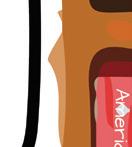
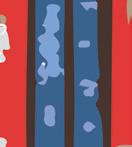

When a Trinity student walks into Rich Library, they can look up and see paintings of classic titles such as Beowolf, A Midsummer Night’s Dream, and Romeo And Juliet. More than 14,000 books line the shelves, including popular titles such as Speak by Laurie Halse Anderson, George by Alex Gino, and e Hate U Give by Angie omas. Many of these books, both on the walls and on the shelves have been banned or challenged in America, and some even in Florida.
race or sexuality. Trinity students have books with this kind of content available in the Rich Library and are encouraged to read them, including e Hate U Give, George, and Speak. De Groft said the school has a clear process to address any book challenge.


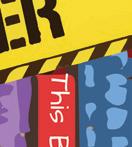




“[Parents] would take it to their administrator, there would be a committee, including teachers and [other] parents who would meet to talk about it, and crucially, if there is a challenging book, everybody on that committee has to read the whole thing,” De Groft said. “No skimming, and then we’ll decide what should be done.”
“If we had nothing but stories where everyone behaved nicely and politely, there really wouldn’t be any ction to read,” Lilley said. “‘ e Handmaid’s Tale’, for example, was written in the ‘80s, and it made a big splash, but nobody knew [it would have] such staying power.”
Trinity Prep parent Jessica Williams, the mother of freshman Ally Williams, expressed support for Trinity students reading banned books in schools. She said it’s important for young people to be exposed to di erent thoughts and ideas at a young age.
“As parents, we tend to raise our children


 -
-







Florida ranks second in total book bans across all U.S. states. From July 1, 2021 to June 30, 2022, Florida has had 566 book bans across 21 districts, according to Pen America. Within Trinity, however, Director of Library and Information Services K. Lee De Groft can add any books on the shelves that she deems important.





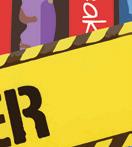


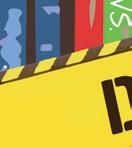


“ ere is something called the Library Bill of Rights that says that you should be able to read whatever you want to read,” De Groft said. “What should be available in a school library should re ect what our students are going through and what they’re interested in or what they’re curious about.”
e Library Bill of Rights is a basic set of principles created by the American Library Association (ALA) and states 7 basic rules that all libraries should follow. e rst principle states that libraries should not exclude materials because they disagree with the origin, views, or background of the text, and the third principle states, “Libraries should challenge censorship in the ful llment of their responsibility to provide information and enlightenment.” However, many librarians in America struggle as to whether they should follow these principles or satisfy complaints about books.
Libraries are mainly facing challenges to “o ensive” books that include topics such as






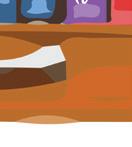





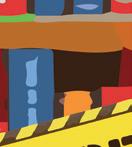
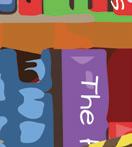


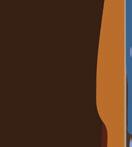

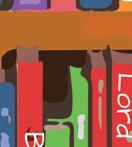
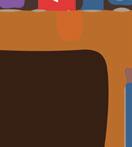










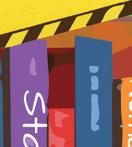





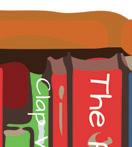















Although no one has attempted to ban any of the books in the library, De Groft said that some parents have been concerned about the content found in some books. She explained that parents have mainly been concerned about sexual content, but she has had an instance where a parent didn’t want their child reading books about magic.
Similarly, Interim English Department Chair and AP Literature and Composition teacher Susan Lilley has had a parent concerned about the material their child was reading.

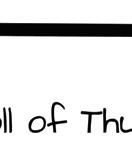
“I’ve only had one instance where someone did not want their child to read e Handmaid’s Tale,” Lilley said. “I assigned an alternate text to that child, but I was reluctant to because then he missed out on class discussions and valuable treatment of the topics.”



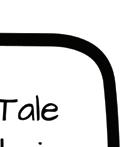


e Handmaid’s Tale by Margret Atwood ranked number 7 as one of the most banned books in 2019, according to the American Library Association’s O ce for Intellectual Freedom. Lilley assigns this book to her AP Literature and Composition class every year because she thinks it has important life lessons that remain timely.


December 2O22 1O
“It’s important to explore all truths in order to find where yours falls in line. And I’ve always felt that if you don’t allow the expansion of ideas, then your choice of ideas is limited.”
Ann Skippers, English Teacher
in a belief system that mirrors our own, but I think that it’s good for people to read things that challenge those belief systems,” Williams said.



Just like Ally Williams, freshman Lilah Tanelian read challenged books such as To Kill A Mockingbird when she was in 8th grade. She explained that many of the banned books she reads share many commonalities, one of which is racial discrimination.
“I think it’s important to read banned books because a lot of them are about certain topics that you wouldn’t hear about in other books that aren’t banned,” Tanelian said.








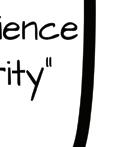
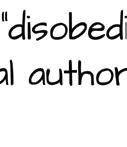

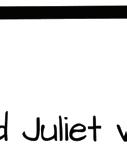



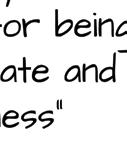



English teacher Ann Skippers teaches the book To Kill a Mockingbird along with many others.
She teaches her classes themes of prejudice, family, courage, and justice, and has discussions with the 8th graders about racism and violence against people of color.
Just like Tanelian, Skippers said that many of the books that have been banned have themes that allow students to think deeper.


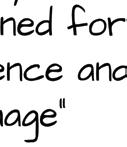

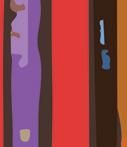



“ ey make you uncomfortable,” Skippers said. “ ey cause the reader to be introspective and possibly question the reader’s thoughts, and beliefs, and perhaps bring to light some uncomfortable truths about themselves.”
Just like e Handmaid’s Tale, To Kill a Mockingbird ranked in the top 10 as one of the most banned books as recently as 2021, according to the American Library Association’s O ce for Intellectual Freedom. To Kill a Mockingbird is criticized for being too inappropriate, containing racial slurs and a plot centered on an allegation of rape. But many 8th graders at Trinity for years recall gaining important lessons from this moving book.

“During the middle school era is when you become self-re ective and you’re beginning to break away and nd your truths,” Skippers said. “It’s important to explore all truths in order to nd where yours falls in line. And I’ve always felt that if you don’t allow the expansion of ideas, then your choice of ideas is limited.”
Skippers explained how it is very important to approach these controversial topics as just normal conversations.













“I feel like if you put a spotlight on the controversy, or if you bring forth the discomfort and really pinpoint it then it makes it a scarier idea to approach but if it is approached in a way that it is just commonplace, then it’s easier


for any student to approach the idea and make it their own,” Skippers said.







Skippers believes that To Kill a Mockingbird adds value because it shares themes that many eighth graders can relate to as they are growing up.



Skippers said that all banned books are a necessary part of her class because they explore commonalities within humanity.
“[ ey show] di erences amongst human beings,” Skippers said. “It doesn’t even have to be di erences between race, or religion. It’s just connecting with your fellow man.”


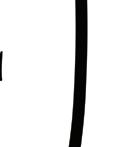



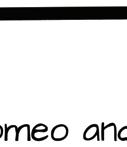





Despite all the life lessons banned books teach middle and high school students, PEN America’s Index of School Book Bans lists 2,532 instances of individual books being banned from July 2021 to June 2022.











ese e orts to remove books that are deemed “harmful” to teens are contradicting American students’ First Amendment rights and freedom of expression. Restricting this freedom can directly re ect how they feel about certain identities.


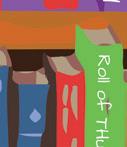

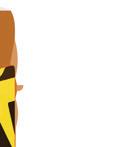


According to a 2022 Washington Post article, 41% of targeted books included LGBTQ+ content, while 40% included main characters of color.


Williams also stated the importance of letting teens read banned books as their own form of expression, and learning about the world around them. She encourages her student to read whatever sparks her interest.
“I trust the environment at school,” Williams said. “I trust her judgment, but I also trust that if she reads something, and she has questions about it, that she’ll talk to me about it and it opens up a dialogue.”
11 Lifestyles December 2O22
Trinity’s curriculum challenges America’s dispute over what students read
“I trust the environment at school, I trust her judgment, but I also trust that if she reads something, and she has questions about it, that she’ll talk to me about it and it opens up a dialogue.”
- Jessica Williams, Trinity Parent
NEW IPHONE FEATURES CALL TO STUDENTS



 Article by Sammy Lou Graphic by Lia Garibay
Article by Sammy Lou Graphic by Lia Garibay


When it comes to what’s inside the iPhone 13 and 14, the average student won’t be able to recognize the di erence between an A15 and A16 chip, a main di erence Apple emphasized in their ads. Yet, students still buy the new phone for these improved features that aren’t really that di erent.
Students often drop and break their iPhones, which calls for a replacement. When looking at options for phones, Apple has provided plenty over the years. Apple just recently released its iPhone 14 on Sept. 16, one year after the release of the iPhone 13. e starting price for the regular iPhone 14 is $799, while the starting price for the 13 model is $699. However, the starting price for an older iPhone, like the 12, is only $599. e cost of these newer phones are not within most students’ budgets, but Apple gives a reason for this high price tag.
In an ad, Apple claims that they added a new A16 Bionic chip, more safety features and new display technology to the iPhone 14.
Part of this technology is an upgrade to a 120-hertz refresh rate, which means that the screen refreshes 120 times per second. In short, these changes result in a more e cient battery, the ability to make emergency calls without data, better-quality video and pictures. Senior Trevor Buettgen, who owns the new iPhone, is already beginning to notice several of its unique features.
“I think the biggest di erence I’ve noticed is either within the display’s 120-hertz refresh rate and having the larger battery life,” Buettgen said. “ at’s de nitely the two biggest features I’ve noticed. I’ve really been happy with the choice. It’s a lot faster, and the battery lasts way, way longer.”
e iPhone 13 is also a signi cant upgrade from the iPhone 12, boasting a faster chip and higher-performance display. Freshman Ashad Sarran upgraded his Samsung phone to an iPhone 13, and he is already noticing the convenience that comes with owning an iPhone.
e biggest di erences between the two phones that he noticed were not the features Apple upgraded speci cally for that model.
Instead, he pointed out many features that were already added from previous iPhones.

“It’s a lot easier to call people than it was to do so with Samsung,” Sarran said. “It also has a better camera and a way better battery life. I also like the Face ID because it is a lot easier to just use your face instead of putting in a password every time.”
To some students, the camera and a better battery are important, but they would also like to see other improvements, whether it be something simple like having more storage or more speci c like a new and improved ngerprint sensor as an alternative for the Face ID. Also, not all of the changes that Apple makes to their iPhones 13 and 14 are as important as other features like Face ID or Siri, but they make navigating the iPhone more convenient. Buettgen possesses these feelings for the iPhone 14’s new dynamic island feature.
“I don’t know if the inclusion of that dynamic island was totally necessary,” Buettgen said. “But I think I actually like it a lot. I think it’s really useful for switching between apps and just keeping track of things.”


Many recent iPhone models have included large upgrades to the camera. e new iPhones introduced improvements in depth, shadow, detail, color and focus in photos. e iPhone 13 also introduced cinematic mode.
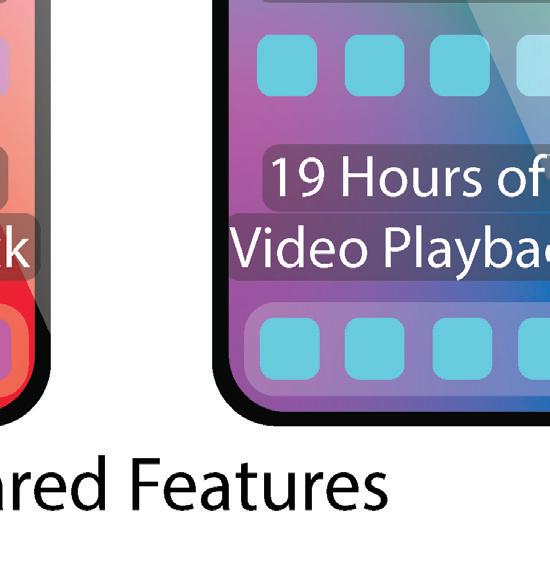
“I’ve seen videos on newer iPhones and it’s very good,” Freshman Linden Smith said. “It is a very high-quality camera. It’s really cool that they can use such a compact space to hold such a good camera. It’s my most used feature of my phone.”
Smith and Sarran both agree that they would upgrade to the iPhone 14 if given the opportunity, and Buettgen is content with his purchase. According to these students, the new features Apple has included in their iPhone 14 are worth the extra $100.
December 2O22 Lifestyles 12
BURNOUT BACKFIRES
Students feel unmotived and fall behind on assignments
Article by Taylor Gri th Graphic by Andrew Edwards
A typical school day for junior So a Malik involves taking multiple AP, honors and regular classes. After school, she trudges through the seemingly insurmountable amount of homework and begins to feel burnt out and unmotivated to keep up with all her classes.
“[Burnout] happens pretty much every year, especially at Trinity since everyone really seeks that academic validation,” Malik said.
However, Malik’s story is not unique to Trinity as this is a reality for students across the United States.
According to news outlet e Optimist, 71 percent of college students in April 2021 su ered from burnout. Being burned out is described as a state of mental exhaustion in which students are unable to maintain school without the chance to relax. Although it’s very common in college to feel burned out, it is also something that can start in middle and high school.
“When you start to notice a change in habits, or you start to notice that they don’t have the same energy level or maybe the same interest in doing activities that they used to,” Guidance Counselor Ryan said. “ at’s when you want to kind of investigate and see what’s going on.”
Students become overextended when they don’t have enough time for themselves, meaning there isn’t time for the simple things, such as having a family dinner or reading a book. is can happen due to always thinking about what needs to be done.

One of several causes for burnout is procrastination. When students leave work until the
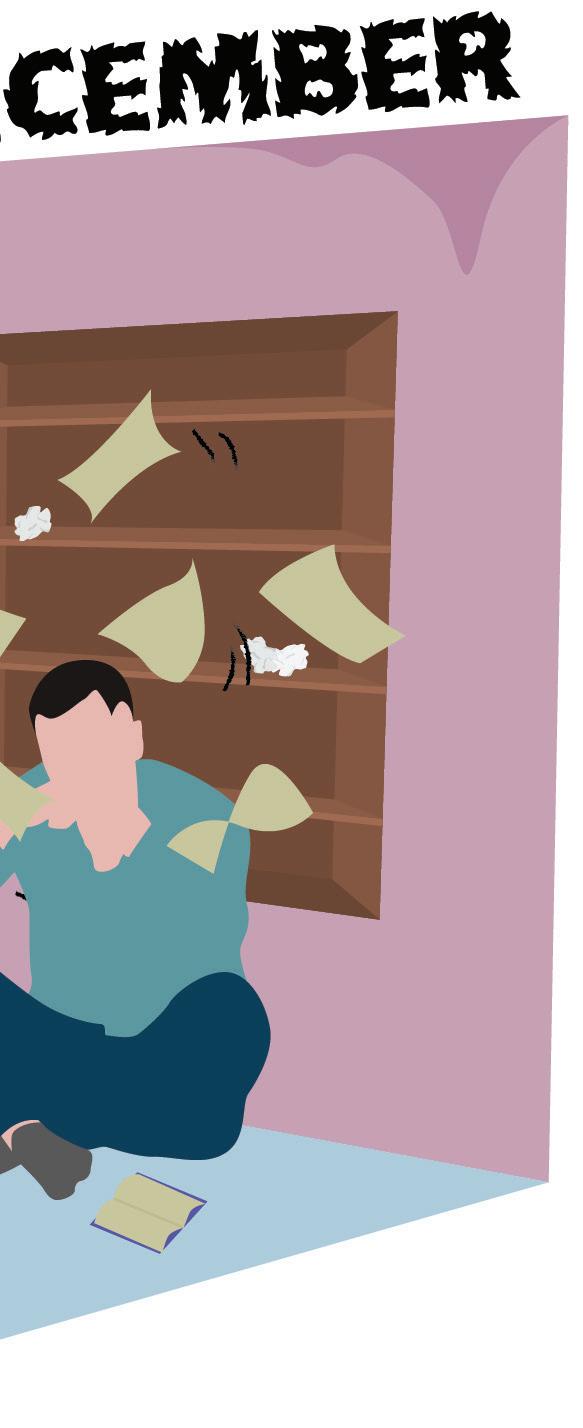


last minute, they can become unmotivated to tackle their mounting assignments and instead feel burned out.
“Sometimes we forget that taking care of ourselves is critical,” Smith said.
Students can identify whether they’re not doing something that they should be such as: overextending, lack of self-care or bad time management.
“ e next step would be talking to someone that you trust, who can help them gure
out are similar, burnout can happen at any age while senioritis is unique to students at the end of their high school careers.

According to an NYU study, senioritis can cause immediate harm and in uence a student’s future including causing a decline in grades, not getting enough sleep, and hurting mental or physical health.
Whether it’s senioritis or general burnout, there are various ways to stay consistent in classes throughout the entire school year.
Malik uses a to-do list. She also sets up goals for herself in order to ful ll the things that need to be done.
Eighth grader Campbell Alch uses the same method to stay productive.
“I de nitely try to make to-do lists to stay organized,” Alch said.





According to the American Psychological Association, parents who are involved in their child’s academic life provide a more positive environment that can help the student have more success.

“My parents help me to keep on top of things, if it seems like I’m not really doing my work, they will help me get back on track,” Alch said.
out some options that might be a better t,” Smith said.

As students progress through high school, burnout often manifests itself as senioritis in which students skip school due to the lack of motivation. According to a recent study by news outlet Omniscient, 78 percent of all high school seniors experience senioritis nationally. While the symptoms of senioritis and burn-
Parents are a big factor in whether students succeed or become consumed by burnout.
“But the reality is very few of us have it all together,” Smith said. “We all have our breaking points. And just because we don’t let people see our breaking points doesn’t mean we don’t have them.”
December 2O22 Lifestyle
Lifestyles
WIRED IN, CHECKED OUT
Overstimulation and how it a ects students
Article by Karthik Stead Graphic by Lia Garibay

When ARPANET (now known as the internet) was launched in 1969, no one could have predicted the massive effects it would have on the human race as a whole. Over 50 years later, the internet has become an integral part of our day-to-day lives. With the world’s library of information at the touch of a button, the idea of splitting attention and multitasking has become quite popular.
Overstimulation is also becoming a larger problem. Overstimulation is defined as an excessive amount of physical or psychological stimulus, and with roughly 2.5 quintillion bytes of data uploaded to the internet each day, overstimulation seems to be more of an inevitability than a possibility.
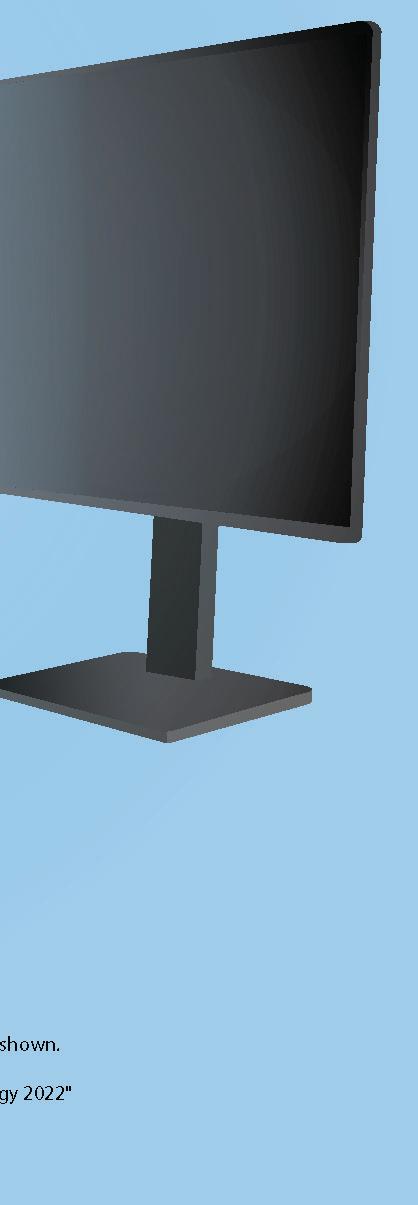

“You all live in a digital world where you're used to getting five things at once,” Guidance Counselor Rylan Smith said. “So I think between the phone and the computer and whatever other devices you have, it [all] comes at you quick.”
Pew Research Center reports that 54% of teens surveyed say it would be hard to give up social media. e addictive nature and instant gratification of platforms such as Instagram and TikTok are shown to reduce attention spans. ese platforms are designed to keep the user on the app as much as possible, in order to increase the amount of advertisements seen by the user. In order to do this, these platforms offer massive swaths of content, which can lead to overstimulation.
Pew Research Center also reports that 46% of teens say they use the internet almost constantly, a 22% increase from their last survey in 2014. To put this in perspective, there are about 1.3 billion adolescents in the world today. at means that an estimated 598 million teens use the internet “almost constantly”. ese numbers, while staggering, do require additional context. To be specific, part of that time could be spent viewing educational resources online or doing online homework assignments. It is also important to keep in mind

that these numbers are not to be used as concrete facts, but rather as tools for estimation.
Overstimulation is not the only negative aspect of frequent online usage, as studies have shown that multitasking has become more popular in recent years.
“I think [that] social media, and some of these other resources have given us the false idea that we can multitask,” Smith said.
Research from e American Journal of Pharmaceutical Education supports this idea that multitasking is generally unproductive, finding that the students in the study who were multitasking performed the given tasks slower than those who were not multitasking. is is further backed up by research conducted in 2018 which showed that students who frequently multitask tend to have lower college GPAs. Multitasking appears to be a response to the amount of overstimulation provided by the internet.
Overexposure to the internet in humans is a phenomenon that has not been fully explored, however preliminary research using mice does provide a look into the effects of overstimulation. A 2012 study published in Nature found that overstimulated mice are generally worse at recognizing new objects. Furthermore, a study published in Physiology and Behavior found that audiovisual overstimulation in childhood led to hyperactivity in adult mice. is data should be taken with a grain of salt, but it does seem to indicate that overexposure to the internet does have harmful effects on the brain.
Ultimately, the internet is becoming a larger presence in the world as a whole. As it becomes a consistent factor in our lives, research shows that it is generally beneficial to unplug whenever possible.

December 2O22
14
TOP FIVE FILMS OF THE YEAR
Article
by Jack Ververis
All movie posters courtsey of IMDB

5. e Banshees of Inisherin
e Banshees of Inisherin’s theatrical origin is inescapable. Two characters- played by Colin Farrell and Brendan Gleeson, equally excellent - and one simple question: what happens when someone simply doesn’t want to be friends anymore? e answer is as funny as it is bleak, and interpretations of it may reveal as much about the audience as they do about the movie. Basically, go see it with your friends.
4. Tár

Like the title conductor herself, Tár will not be for everyone.

is is a di cult, thorny lm, as cold and sparse as the main character’s apartment. It is also, if the opening 10-minute interview scene doesn’t clue you in, slow; Tár demands you t its rhythm, and punishes those who don’t. But what a wonderful rhythm it is. Led by an astonishing Cate Blanchett, Tár knows exactly what it wants to do and moves with a musician’s precision.
3. Marcel the Shell with Shoes on
You don’t go into Marcel the Shell with Shoes On expecting to cry. For the rst hour, you might not even consider it, laughing along to Marcel’s (Jenny Slate) charmingly animated

observations about the world and his relationship with his grandma Nana Connie (Isabella Rossellini). You might catch moments of loneliness- a lantern oating into the night, or a quiet comment about a divorced partner- but Marcel’s cheerfulness and humor quickly moves the moment past, like the ticking hands of 60 Minutes. Marcel is a movie about community, and while it deals with profoundly heavy subjects, it never loses that buoyancy.
scenes, more friendships, more violence. It is impossible to describe and impossible to hate. ose describing RRR for the rst time often struggle to capture this 3-hour Telugu epic, resorting to sound-e ects and child-like wonder. It is a sharp rebuke to IP-driven blockbusters, and spectacular.
1. Everything Everywhere All At Once
Everything Everywhere All At Once shouldn’t have worked. is low-budget sciaction-comedy, with a multiverse concept somehow even crazier than Daniel Kwan and Daniel Schneidt’s previous farting corpse movie, should have been a disaster. Somehow, they pulled it o . EEAAO is, well, everything: much like our #2, it embraces maximalism, providing laughs, heart, and cosmic horror in equal measure. Most media about the multiverse shy away from its true possibilities. By embracing it, EEAAO transforms from creative to mind breaking. It is supremely con dent, overwhelmingly stylish and unquestionably the best movie of the year.

2. RRR


December 2O22 Lifestyles 15
RRR is more. More action, more dance
HONORABLE MENTIONS 10. Prey 9. After Yang 8. e Batman 7. Nope 6. Top Gun: Marverick
Opinions THE CURSE OF COMPETITION
On Nov. 1 every year, hundreds of thousands of students open the Common Application ready to apply to college. eir applications re ect four years of classes, essays, clubs, SAT scores and everything else they have done throughout high school. However, when they press submit, all of their hard work is compared and labeled “accepted” or “rejected.”
While college applications are advertised as holistic, most factors are reduced to a single number such as GPA, SAT scores or class rank. Academic performance and intelligence are often con ated, and when that is turned into a number that is easy to compare with everyone else’s, a toxic environment can ensue. At a college preparatory school, the competitive atmosphere is magni ed; every grade received feels like an indicator of what college you will get into or how successful you will be.
Competition in our classrooms can be seen as a driving factor to perform better. However, as it is pushed into the extreme, it turns into an extra weight students have to carry. When every student is competing for the top, there is a mentality that even one small mistake is unacceptable. Students fear failure, but to them failure could be simply getting an A instead of an A plus. When success is de ned as being the top of the class, there is little room for everyone to feel successful.
A survey done by the Pew Research Center found that 70 percent of teens believe anxiety and depression is a major problem among their peers. e competitiveness creates a stress to always be performing to the same level your peers are. A student’s mental health should not be sacri ced in order to get a college acceptance, however, to many students that is a sacri ce they are willing to make.
is stress stems from the belief that only the top will make it into a college of their choice. Top colleges will only take a select few students from each high school, so if you want to go to one, then you must perform better than everyone else. is belief, combined with
pressure from parents and the fear of being viewed as less intelligent, pushes students to overwork themselves.
“Sometimes [competition] just stresses me out and gives me anxiety,” senior Katie Corddry said. “ en, I will perform worse because it gives me test anxiety. Also, it can hurt your feelings to hear people talking about I got this and you’re like well I didn’t get that. You assume because Trinity is so good academically that you’re average, and really we’re all way above average.”
To stop competition from consuming our classrooms, changes must be made by the students and the school. e students do not have to stop caring about their own grades— rather, they have to stop caring about one another’s grades. Compete with yourself to earn a higher grade on the next test, not a higher grade than your peers.
By making comments on what grades or SAT scores are considered acceptable, students are creating a bar for intelligence that does not exist. In an environment where everyone openly shares their grades, students’ work becomes reduced to a number and used as comparison.
Students must recognize the toxic competition and actively try to avoid it. By keeping grades private or not making comments on the di culty of assignments, other students are not given the opportunity to feed into the competition. Once someone shares a grade, it becomes a battle of who is the smartest.
“I think you should just keep all your information to yourself, and you do not have to share with anyone,” Corddry said. “Also, I don’t think everyone needs to know each other’s grades or ask other people what they got. I think it’s our culture as a school to be like what did you get on this test. But you can exclude yourself from that.”
e school must try to minimize the competitive environment and actively make strides to foster group work. A valedictorian title could be viewed as a reward for four years of a
dedication to academics. However, when students only focus on the recognition and opt to not take classes knowing it could hurt their GPA, they are actively hurting their education. One way to help reduce competition is by getting rid of valedictorian and other class ranks. Learning should never be a ght to the top, and when a coveted title is dangled above students’ heads, they lose sight of the actual goals of education.
Another way schools can help toxic competition is by making group work a priority. Trinity is not just a college preparatory school, but rather a school that prepares students for the rest of their lives. Being able to work in a team e ciently is a valuable skill, but being highly competitive contradicts teamwork. By adding in more collaboration in the classroom and throughout the rest of the school, students are put in multiple situations where they must learn to put collaboration over competition.
As a school, we must make e orts to reduce competition in order to keep students less stressed on what the person next to them got on a test, and rather concerned on how they can improve their own grade. e less competition there is then the more students will be able to comfortably come to school and learn e ectively. e number in red on the top of a paper does not de ne a student— it is the e ort that went into achieving that number that matters.
e lead editorial expresses the opinion of the Trinity Voice editorial sta . Please send commentstovoice@trinityprep.org.





December 2O22
This article contains potentially sensitive mate rial concerning mental illness and suicide.


Opinions
Article by Reese Taylor Graphics by Andrew Edwards
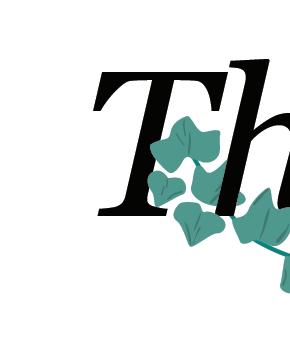
is past month, the Supreme Court began its hearings for the cases Students for Fair Admissions v. Harvard College and Students for Fair Admissions v. University of North Carolina at Chapel Hill. With it, the conversations surrounding a rmative action have once again resurfaced in the American consciousness.
For minority students, the conversations belittling e orts at a rmative action are incredibly damaging. Watching classmates, teachers and administrators across the nation praise the end of SAT/ACT testing because it “levels the playing eld” only to claim that a rmative action is unfair has an unambiguous message: I support all e orts to create equality, unless I believe it will not bene t me.
Proponents against using race as a factor in admittance often argue that it’s the beginning of creating a more fair and just college admission process. However, when every other system in place today is everything but “fair and just” this becomes an excuse to disadvantage already struggling demographics. Whether it’s access to standardized testing prep, educational/career opportunities, or simply how intelligent their instructors will believe they are, minority students are hurt at every turn.
THE ROLE OF LEGACY ADMISSION
e reality is a rmative action has become a red herring for many of the truly unfair parts of college admissions. e Harvard Crimson said that between 2014 and 2019 the acceptance rate for legacy students was 33% in comparison to the overall acceptance rate of 6% of those years’ cycles.


For the University of Pennsylvania, it was over 20%. For Princeton University (which has a 4% acceptance rate) it was over 30%. According to an article by e Atlantic, being a legacy student at a top university correlates to a 45% better chance of acceptance.



If eradicating a rmative action is an attempt to equalize college admission, then standard admissions processes should begin with exam-
ining the



status of legacy admittance rather than target-






ing an already small percentage of minority students.
MINORITY REPRESENTATION
Moreover, the University of Michigan and University of California are clear examples that without factoring race into admissions numbers of minority students in undergraduate classes will continue to dwindle.
Over 15 years ago, due to anti-a rmative action cases both institutions were forced to end their use in admissions. According to e New York Times, despite the millions of dollars poured into outreach programs (for

e University of California, more than half a billion dollars) numbers of Black and other minority students stay remarkably low. Notably, the University of Michigan’s Black student population hit just 4%.
A rmative action is an attempt to push socially, historically and economically disadvantaged students into educational institutions that excluded them until just a generation ago. According to e Columbia Current, Columbia University did not accept Black students at any signi cant rate until the late 1960s.

BARRIERS TO EDUCATION
Black and Latino Americans face barriers in all sectors of life that prevent them from achieving the level of education of other
December 2O22
Conversations about a rmative action neglect the barriers minority students face



THE NEED FOR EQUALITY

“I thought that part of what it meant to be an American and to believe in American pluralism is that actually our institutions…are reective of who we are as — as a people vcvin all our variety,” said Supreme Court Justice Elena Kagan during one of the days of the hearing.
Education is the gateway for equality. In medicine, according to the University of Michigan, more Black physicians could reduce the Black-white mortality gap in heart disease by 19%. In law, according to the People for American Way and USA Today, an increase of people of color into our judicial system can help combat overcriminalization and unfair policy within those populations.


As Justice Kagan said, our institutions need to be re ective of the American people. We should push minority students into medicine, engineering, law, tech, and the like because it will better society as a whole. e social and economic barriers that people of color face breaking into academic institutions and higher institutions are clear. However, their presence within them is necessary.
Supreme Court Case era. Too often, when the standardized testing scores or GPA of Black and non-Black admissions are compared it becomes a source of contention. What this disregards is that a rmative action attempts to account for the barriers that Black students face that non-Black students do not.
e Hechinger columnist and published author Andre Perry said, “Standardized tests are better proxies for how many opportunities a student has been a orded than they are predictors for students’ potential.”
For Black students, those opportunities aren’t only economically based in nature but socially. According to the Brookings Institute, even when in better funded, predominantly
students get in education is “...o set by the social costs of being in an overwhelmingly white enviroment.”

According to Johns Hopkins University, when evaluating the same Black student, a white teacher is around 30% less likely than a Black teacher to predict the student will complete a four-year degree, and white teachers are 40% less likely to assume Black students will graduate from high school.

Another argument against a rmative action is that it will undermine the achievements of minority students who do manage to attend these institutions. However, this argument comes from a place of privilege.
It is exhausting to constantly prove that you deserve a seat at the table but, statistically, it is a privilege to have a seat to defend at all.

Minority students still do not make up a proportional amount of undergraduate admittance classes under current case precedent. It is clear that current policy is not nearly as much of an advantage as it is often made out to be. Rather, it has allowed the general American news cycle and psyche to take their focus away from legacy admissions and other more significant admissions practices and instead demonize the admittance of high achieving minority students.

A rmative action cannot end until as a nation we fully face the economic and social barriers we uphold. While a rmative action is not the sole solution for these barriers, it is a start to creating equality. When we choose to not support a rmative action, we choose to not recognize our past.

December 2O22 Opinions
A FALSE SENSE OF EQUALITY
Article by Marcos Membreno Graphic by Lia Garibay
On Nov. 1, the Supreme Court signaled that there could be an end to the half-century long practice of a rmative action, race-conscious admissions, after hearing oral arguments on the case Students For Fair Admissions (SFFA) v. Harvard College. e Petitioner of the case, SFFA, argued that by giving on-average low personal ratings to Asian applicants, and on-average high personal ratings to Black and Latino applicants, Harvard systematically racially discriminated against Asians.
To clarify, these ratings consisted of intangible factors taken from essays, recommendation letters, and interviews, but were found to be manipulated to impose a race penalty — Asian students aren’t really less personable.
Asian Discrimination
Using logistic regressions created by SFFA’s expert witnesses, it was found that the race penalty imposed on Asians is so signicant, that if Asian applicants were treated as white applicants, their admit rates would be 19% higher. e racial preference given to other minorities is even greater than the Asian penalty as Asian applicants admit rates would increase “threefold” if they were treated like Latino applicants and “over vefold” if they were treated like Black applicants.
In their Petition for a Writ of Certiorari, SFFA found that based on academics (grades and test scores), Black applicants who ranked in the bottom 40th decile were as likely to gain admission to Harvard as Asian applicants who were in the top 10th decile (see graphic). Quali ed Asian applicants are being passed up at a magnitude so large, that just checking o Black or Latino on an application has the same value, if not more, as an Asian student winning an academic national award.
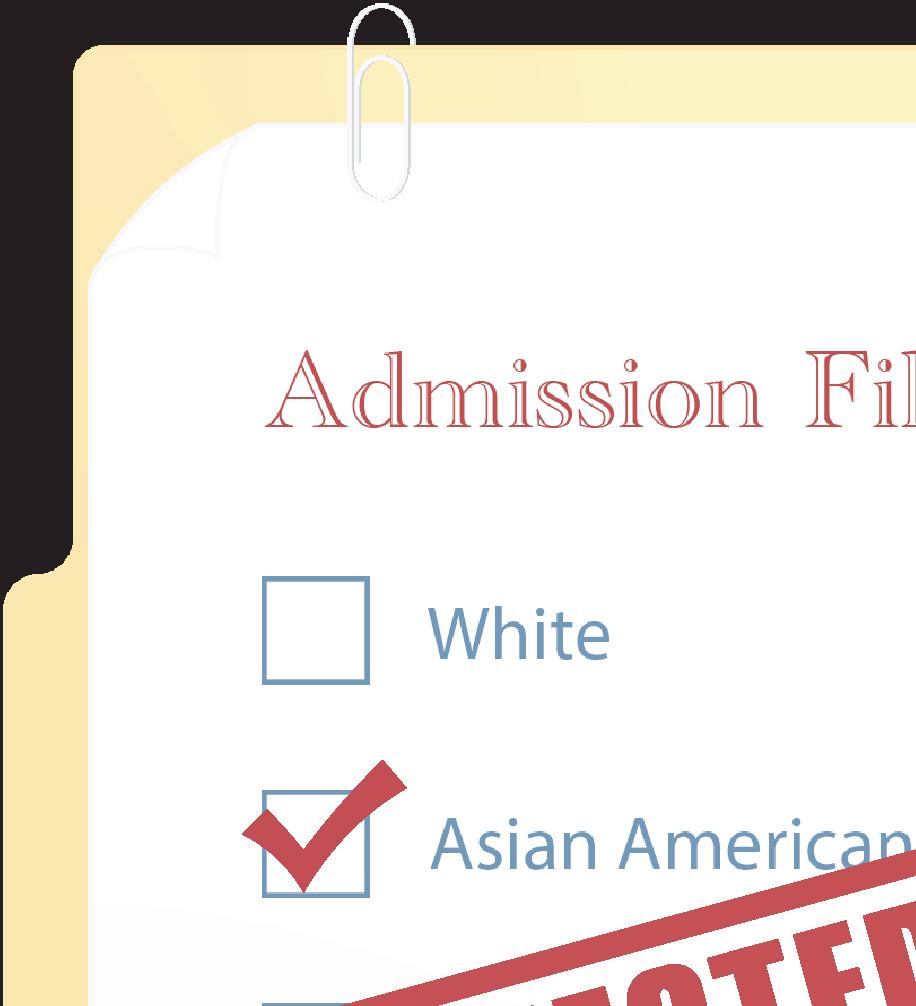
It is commonly argued that college admissions is a holistic process, and that traditional academic metrics do not account for everything. However, a rebuttal expert report showed that when looking at non-academic
metrics, excluding the discriminatory personal ratings, Asians made up the largest share by race in the top decile of non-academic metrics. It does not make sense why Asian applicants would be penalized when, on average, they are performing better on academic and non-academic metrics.
What are we telling Asian students about equality when they’re told they need to perform above and beyond other racial groups just to get the same level of consideration on their application?

Diversity At All Costs
In Harvard’s 2021-22 Common Data Set, racial and ethnic status was considered at the same relative importance as GPA, application essay and extracurricular activities. Proponents of a rmative action argue that the use of such racial preferences is a necessity to create diversity and that there is no other way to account for systemic inequalities that Latino and Black applicants face leading up to college.

First, discriminating against a speci c race (as evidenced above) to combat inequality or reach diversity is a hypocritical solution. Second, it is incorrect to believe that diversity can be traded o for academic quality in order to combat racial disparities.
To preface, yes, diversity does bene t education. When facing sociological and philosophical questions, di erent perspectives enhance classroom discussion. However, this only goes so far. College is about hearing diverse opinions, but most importantly the success of students. Diversity does not improve any student’s performance in classes such as statistics, chemis-
try, nance, etc. Scoring higher on the SAT or your GPA does however serve as an accurate gauge for success in not just these studies, but all. Race and academic performance should not be given the same level of importance when diversity comprises only a small part of what college work involves.
In a 2012 study, Duke University economist Peter Arcidiacono found that Black and Latino students, speci cally whose academics wouldn’t normally gain them admission, were the most likely to drop out of STEM elds and economics. Furthermore, out of students who dropped out of those majors, the same Black and Latino students were the most likely to
December 2O22 Focus
2O
A rmative action discriminates against Asian students
racial disparities

have done so due to “lack of pre-college academic preparation” or “academic di culty in the major course requirements.”
As evidenced, minority students who gain admission because of racial preference do not do better once accepted. Giving racial preferences in admissions only creates an optical view of equality. When you set di erent standards of merit for di erent population groups, you will get a disparity in performance at the college level. Attempting to institutionalize racial preferences only concedes the disparity and leaves its underlying causes to be ignored. Sacri cing academic quality in the name of diversity doesn’t help anyone.
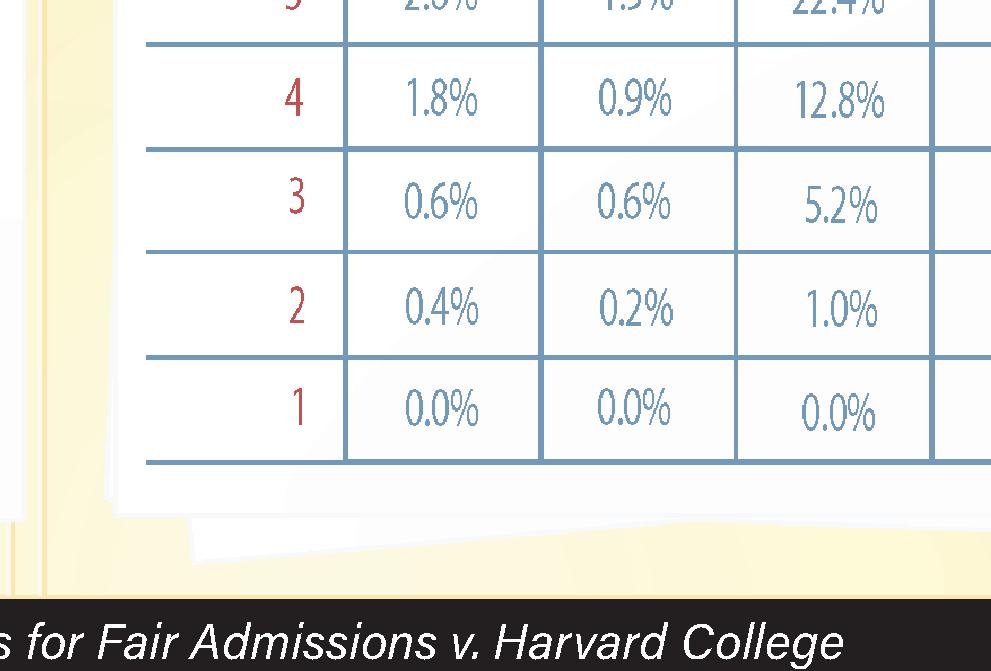
Without addressing the systemic challenges that occur well before college, which include unequal access to testing and proper schooling, minority students who gain admission determinant on their race will enter college unprepared for the academic arena that awaits them. e focus should be on how to bring Black and Latino applicants up to the standards rather than changing the standards for them — this would have to occur outside of colleges and in primary/secondary schooling along with other social systems. e issues that proponents of a rmative action work for are very real. Inequality is a major issue in our country, but there are better ways to solve this than by discriminating against a spec c race and creating a false sense of equality.
Better Alternatives
Proponents of a rmative action argue that without considering race, the proportion of underrepresented minorities in colleges would immediately decrease. Working to build up the performance capacities of minorities so that they’re on equal footing is a long process. erefore, I o er three alternatives to the admissions process which have been advocated for by SFFA and would keep diversity while remaining race-neutral.
e rst change that should be made, regardless of the decision on a rmative action, is to remove admissions based on parental status as alumni, donors and faculty. Preferences to these applicants often bias rich white students who
would otherwise not gain an acceptance. SFFA cited a simulation in which they removed admits that were children of alumni, donors, and Harvard faculty. Doing so increased all minorities’ admission proportions.
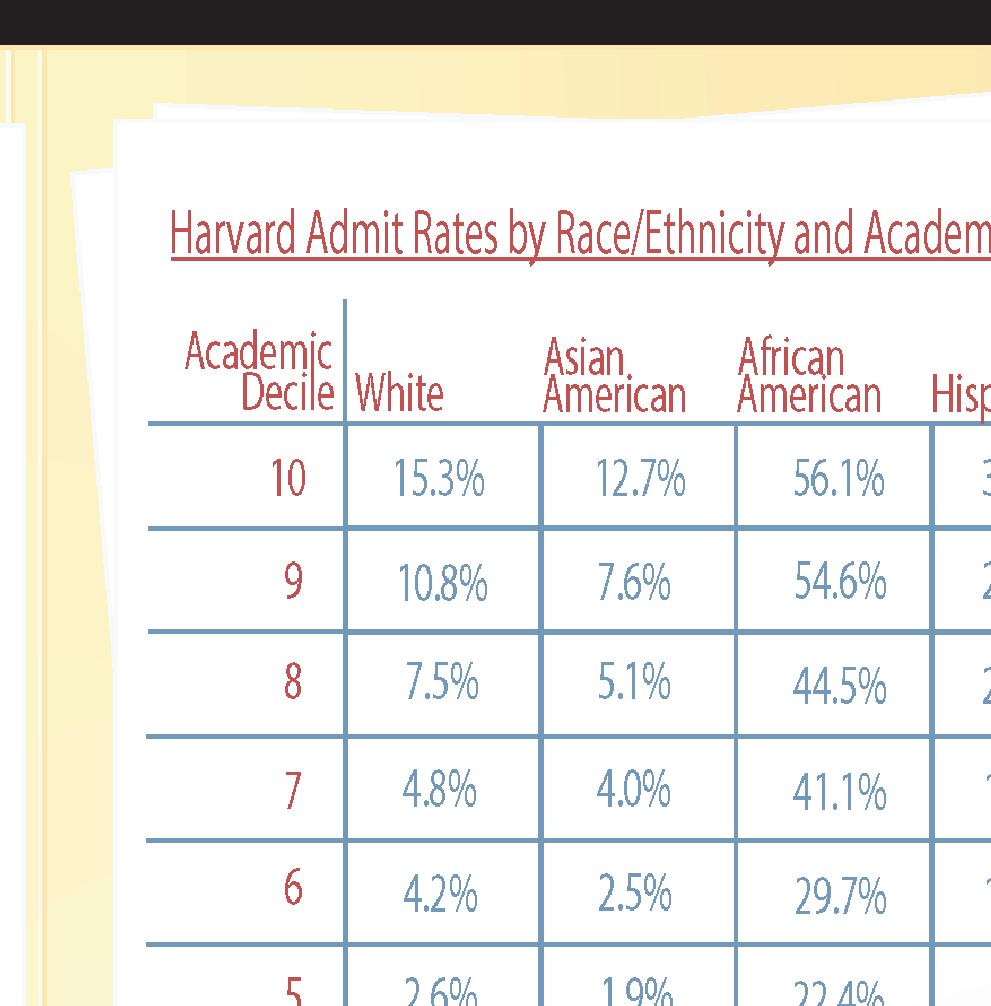
e second change should be through the consideration of socioeconomic status at the same importance as race is now. is change would help increase the admit rate of Black and Latino students who are, on average, less wealthy, and it would tackle the root of systemic inequalities better. It would not hold an e ect on rich Black and Latino students who don’t face the challenges said to be in testing and schooling inequality. It would however, bene t applicants, minorities or not, who had to overcome lack of opportunity.
e third change is through automatic admissions based on class rank or other academic standings. In Fisher v University of Texas (2016), the University of Texas con rmed that the race-neutral alternative of automatically admitting students who fell in the top 10% of their class “e ectively compensated for the loss of a rmative action”. e 2004 entering class at the University of Texas at Austin had a higher proportion of African-American, Asian-American, and Hispanic students than it did in 1996, the last year that the University system used race-conscious admissions.
While the focus should be on getting all disadvantaged minorities the support to reach merit standards (in the 18 years prior to college), there are clear short-term alternatives to a rmative action that will lead to immediate greater diversity on campuses, without discriminating against a speci c race.
In opening arguments, Harvard’s attorney Seth Waxman acknowledged the district court’s nding that “race is determinative for 45 percent of Blacks and Hispanics who get into Harvard.” If we want to tell the next generation that they shouldn’t worry about their skin color, then we should stop making it matter so much. Being a Latino, I want to know that my college admission was determined by my merit, not by the color of my skin.
Focus December 2O22
and fails to e ectively combat
21
Opinions

PRO: PEDS ARE THE FUTURE OF LIVE SPORTS
The sports world wants faster, stronger, better athletes
Article by Boaz Kim Graphic by Lia Garibay





















Last year’s NBA Finals where the Golden State Warriors beat the Boston Celtics 4-2 in a best of seven game series demonstrated a recent trend of declining viewership in professional sports world-wide. According to eAthletic. com, Game 1 and Game 2 of this NBA series had the lowest viewership of an NBA Finals series since 2007. Some say that the decrease in sports viewership is because basketball is not as popular as football, the number one watched professional sport in America. However, a CNBC article showed that even viewership for the Super Bowl has gone down every year for the past 10 years. e problem is that viewers are getting tired of watching the same old sporting event year after year.
While various sports have tried everything from incorporating state of the art technology at the New York Mets’ stadium, to streaming games like the NFL on Nickelodeon last year, it is not enough. Sports viewers want to see something new, bigger, and better. e most e ective way to meet these demands would be to allow professional leagues to maintain and regulate the use of Performance Enhancing Drugs (PEDs), which will bring back the sports entertainment that we have lost.
In sports history, there have been countless occasions of athletes caught using PEDs such as Olympic cyclist Lance Armstrong and professional soccer player Diego Maradonna. I understand that they were punished because it was considered cheating at the time and because it was unsafe. However, if professional sports legalized PEDs it would solve these issues. It would not be considered cheating anymore, and the professional leagues would be able to regulate the intake of these PEDs to safe levels. Allowing athletes to take a certain amount of PEDs legally would control their temptation to take an excessive amount of PEDs illegally.
“Yes, athletes will still try and cheat wherever the line is drawn,” Professor and Uehiro Chair in Practical Ethics at the University of Oxford Julian Savulescu said in an article for Quartz, an online news publication. “But by focusing on measurable physiological parameters, and only using zero tolerance on drugs that are unsafe in any dose, we will have a chance to alter the balance so the rules we do have are enforceable, and it is rational not to cheat.”
Over time, with the legalization of PEDs coupled with the modern day technology that we have access to today, health would not be an issue for legalizing these performance enhancers. With regulation on what is and is not allowed, professional leagues would make sure to keep their athletes healthy.
“What if we declared that certain levels of them in the body were acceptable, while excessive amounts would result in penalties?” former U.S. Olympic javelin thrower Kate Schmidt said in an article for the Los Angeles Times. “Athletes could stop experimenting on themselves. It would be safer to take the sub-


stances, and with medical monitoring, there would be fewer negative side e ects”

































Furthermore, to address the big issue that has come of declining viewership: economics. Athletes such as MLB legend Barry Bonds who broke the record for most home runs in a season back in 2001, was found to be using PEDs and stripped of his legitimacy for the Baseball Hall of Fame. Whether you agree with this decision or not, it is undeniable that Barry Bonds’ performances were legendary and everyone was tuning in to watch him break records. With the legalization of PEDs, amazing feats like Bonds’ could be witnessed every night. Demand for streaming and attending live sports would increase dramatically because athletes would be able to perform physical feats that could
attending live sports would increase draperform never be done before.
“If professional athletes were able to take PEDs I think it would change the athletics world a lot, but in a good way,” senior Ronith Bokkisam said. “To watch my favorite athletes, especially in football and basketball, who are already athletically skilled become way bigger and stronger would be so fun to
watch.”




















We do not watch professional athletes because they are just like us; we watch them because their skill and physical capabilities are far greater than we could ever imagine ourselves doing. Now it is time to take these capabilities to the next level.

December 2O22
22
CON: CLEANING UP THE COMPETITION

PEDs are destroying modern day sports
Article by Sreekar Nagulapalli Graphic by Austin Yuan



Sports are synonymous with three things: wins, losses, and drugs. What started with the ancient Greeks drinking what they thought were performance-enhancing potions to gain a step up in the Olympic Games has evolved into something used by the likes of baseball star Barry Bonds, cyclist Lance Armstrong and even amateur athletes. According to e National Institute on Drug Abuse, more than 500,000 eighth and tenth grade students now use these dangerous drugs, and over a million American adults use anabolic steroids per year.
Since so many athletes are already using Performance Enhancing Drugs, or PEDs, advocates for its legalization think permitting the substances will be net bene cial, but the problem is not so black and white.
e rst problem with legalizing PEDs is, of course, the health risks. All drugs, including PEDs, have long-term, detrimental e ects on a person’s physical and mental health.
According to a 2014 study on the consequences of PEDs in the National Library of Medicine, “PEDs have potential not only for direct medical consequences, but also for exacerbating other conditions. [PEDs] may allow the athletes to engage in extremely intensive training exercises even in the face of previous injury, thus greatly increasing the risk of musculoskeletal injury.”

Not only are athletes risking their own careers, but also the wellbeing of all their opponents. If steroids were legalized, athletes who would not have doped because of the health consequences will feel coerced into using illegal substances to keep up with the competition. is could result in athletes slowly shortening their lifespan in order to stay at the new competitive level set by steroid users.
Proponents say that whether or not PEDs are legalized, athletes will still use them, but you can’t have your cake and eat it too. If athletes are legally allowed to take a certain amount of drugs, who is stopping them from taking even
more? Legalization is antithetical to increased use because the perception of the consequences changes — nicotine empirically proves this.
“Nicotine kills more people than alcohol and all illegal drugs,” said George Will of the Washington Post. “Even though the government heavily stigmatized [nicotine], 20 percent of Americans become addicted. Legalization would mean drugs break the stigma as drugs would be readily available and legal.
ere is no reason to think today’s levels of addiction are anywhere near the levels that would be reached under legalization.”




























Contrary to the common belief, both nicotine and anabolic steroids are addictive, which is why nicotine is able to teach us a valuable lesson. If PEDs were legalized, the stigma of breaking the law would immediately disappear, which just opens the gates to even more unsafe use. It becomes an endless cycle of athletes taking more and more to try to stay ahead of the competition, where any regulation would be too little, too late.
Most importantly of all, the paradigm shift will a ect the next generation the most. Kids will grow up idolizing athletes, buying their jersey, putting a poster of them on their wall, emulating their hero in every part of their daily lives. Until one day, they gure out that their icon is taking PEDs and is consequently experiencing professional success.

than they may ever know, and kids are some of the most impressionable humans on the planet. If everyone else is doing drugs, why shouldn’t they?
Finally, legalizing drugs ultimately destroys the true motive of playing and watching sports in the rst place: because we love them. PEDs devalue the underlying meaning of sports because instead of character, grit, skill and hard work driving an athlete, the athlete seems to be fake and only powered by an unnatural substance. What once was a head-to-head mentality, where the only thing di erentiating athletes from their opponents was their will to win, seemingly becomes a race to the bottom about who can juice the best.
At the end of the day, sports are entertainment, and they are entertaining because the outcome is unknown. Anyone can win, which intrigues viewers to watch and think to themselves about which team’s players really want it and which players don’t. When a viewer’s rst thought is instead questioning whether or not an athlete has taken steroids, it becomes easy to start creating millions of excuses for that athlete’s success or the outcome of the contest, even if the steroids’ e ect was minimal.
Take Barry Bonds for example. Seven-time MVP, single-season home run record holder, career home run king, all-time leader in both walks and intentional walks, and widely regarded as one of the top 10 baseball players of all time. Yet 15 years after his retirement, he is still not in the hall of fame because of his PED usage.
As for us, we must make sure we are not encouraging bad behaviors. e entire reason sports are encouraged are for their health bene ts, but that changes when you legalize steroids. No one should feel compelled to think that shortening their most precious gift is worth it for a game. We have a moral obligation to do whatever it takes in order to protect kids, protect athletes and protect the sport itself.

December 2O22 Opinions
23
Athletes have more of an impact
Opinions
A PENALTY WORSE THAN DEATH
 Article by Amanda Rose DeStefano Graphic courtesy of Kelsey Wang
Article by Amanda Rose DeStefano Graphic courtesy of Kelsey Wang
e families of the victims in the Parkland shooting held their breath on October 13 as they awaited the punishment for the assailant, Nikolas Cruz. When the judge announced that Cruz would live the rest of his life in a high security prison instead of being sent to death row, many members of the community shared their outrage over the sentencing.
Up until 2016, Florida juries could sentence convicts to death if a majority of the 12 agreed. In Hurst v. Florida, the Supreme Court viewed this law as giving judges too much power and jurors too little. After revisions were made by Florida legislators, the current sentencing law requires all 12 jurors to recommend the death penalty. As the jurors in Cruz’s case only voted 9-3 for capital punishment, this requirement for a unanimous decision led to him being sentenced to life in prison without parole.

Family members of the victims pleaded for the killer to be put on death row as punishment for the lives he had taken. Annika Dworet, the mother of 17-yearold victim Nicholas Dworet, asked the courtroom, “how much worse would the crime have to be to warrant the death penalty?”
While these families might feel as though capital punishment is what Cruz deserves, writings and drawings released by the Broward County Sheri ’s O ce suggest that death is what Cruz wanted. ese 30 violent pages ranged from drawings to notes describing that he wanted to go to death row or die of a heart attack. Having been responsible for the deaths of 17, Cruz did not deserve to get what he wanted.
Even beyond Cruz’s case, the death penalty is an unnecessary and violent punishment that should not be endorsed by the state. One rea-

son for this is how the punishment has been inconsistently applied across America due to contrasting perspectives from lawmakers. Just 2% of US counties have imposed 52% of all executions from 1976 to 2015, according to the Death Penalty Information Center. In order to curb implicit unfairness that di ering policy perspectives have, serious federal consideration is necessary.
“ ere is de nitely a level of unfairness that comes into that,” said Brandon Burmeister, a government teacher at Trinity. “It would be a good use of federal time to create some kind of threshold that would be a federally mandated kind of threshold in that response.”
Race is also a factor at play. Although only 13.6% of Americans are Black according to the U.S. Census, they make up 34% of those executed. Washington State reported in a 2014
e death penalty has been defended as long as it does not violate the 8th Amendment and concepts of cruel and unusual punishment. “Botched executions,” or executions that constitute a deviation from proper procedure and typically end in more agony for the prisoner, are a whole other issue. An estimated 3% of all US executions from 1890 to 2010 were botched, regardless of promises that the technology used to perform death sentences was safe and humane, as to not violate the Eighth Amendment. is risky aspect constitutes one of the most inhumane practices our judicial system could ever engage in.
e permanence of the death penalty poses an especially grave threat for those who have been wrongly accused. Since 1973, more than 190 people who were sentenced to death have been proven innocent and exonerated, with the largest number of these exonerations occuring in Florida. Science. org reports that after analyzing more than three decades worth of death sentences across the US, 4.1% are likely to be innocent.
While most people think that the death penalty is still a cheaper option, it’s actually incredibly expensive. e cost of the death penalty isn’t just the lives of those who receive it, but the tangible expenses that come along with it. Trials relating to the death penalty require more experts, lawyers, time in court, appeals and specialty incarceration. Trials involving the death penalty are reported to cost more than eight times what a murder case not seeking the death penalty would cost, according to the O ce of Defender Services of the Administrative O ce of the U.S. Courts.
study that in similar cases, jurors are three times more likely to reccomend the death penalty for Black defendants compared to their white counterparts. Racism also manifests on the victim’s side of the crime. e chances of getting capital punishment when the defendant is Black is higher than when the defendant is white. During the 1980s in Georgia, the death penalty was given for 70% of black defendants with white victims, as opposed to 15% for white defendants with Black victims.
With a plethora of ways the death penalty negatively impacts communities, it’s easy to see why the United States is past the need for such a punishment. e sentence is hypocritical at best, using the death sentence for those who kill, and unfair at worst, given arbitrarily and even incorrectly. A civil society should not fall into the trap of the very thing it is trying to eliminate, especially not when it gives some, like Nikolas Cruz, what they view as the easy way out.
December 2O22
24
COX’S CROSS COUNTRY CAREER
Article by Victoria Berube
 Photo by Anna Miliotes
Photo by Anna Miliotes
After only three years of training, senior cross country runner Morgan Cox holds the title of the second fastest girl in Trinity Prep history. She is 0.08 seconds away from claiming the rst place spot.
Prior to attending Trinity as a sophomore, Cox’s athleticism started with competitive gymnastics and Winter Park High School’s rowing team.
“When I was a gymnast, I trained 20 to 25 hours a week,” Cox said. “One thing it taught me was commitment to a sport and really anything I do.”
With Trinity’s lack of rowing team, Cox needed a way to stay active so she chose the cross country team.
“Ineeded something to guide my energy towards,” Cox said. “So I chose running because I’ve never been a ball sport person.”
Head cross country couch Sara Dowdy describes Cox as extremely hardworking. Additonally, her success did not happen overnight.
“She’s every coach’s dream,” Dowdy said. “She’s on time to every practice, she takes every workout seriously, but she still has fun and can joke with the other teammates.”
During Cox’s junior year, she lowered her time each race and in total dropped three minutes over the course of the season.
“My favorite part about running is the personal satisfaction aspect,” Cox said. “Being able to get faster every single week and just pushing my body is something that I enjoy.”
After three years of hard work, Cox has decided to commit to running cross country in college. She spent a lot of time deciding where she would run, considering all aspects of college, and ultimately chose Emory University in Georgia.

“I didn’t want to go to a school just because they were D1 or because they had massive funding for their athletic programs,” Cox said. “I wanted to go to a school that I knew would challenge me and had a good reputation.”
Cox hopes to be able to be pushed more as a college athlete and is excited for her future at Emory.
“[Im excited to compete] with a lot more people and a lot more people that are better than me because, I think that leaves a lot more opportunity for growth,” Cox said.
Although, Cox’s time as a Trinity Prep cross country runner has concluded, her career has just started. Coach Dowdy shares this is only the beginning for Cox.
“She’s gonna be great [in college] because she’s made such a jump from sophomore to junior year and this year, so I think she’s just starting to see what she can do,” Dowdy said.

December 2O22 Sports 25
Senior Cross Country runner, Morgan Cox running on the track. She is wearing her Emory University gear where she plans to run in college.
A KICK IN THE WRIGHT DIRECTION

Senior goalie Shane Wright takes next step in career
Article by David Hull Photo by Raheel Patel
Millions of high school students across the nation compete with the goal of becoming a division I athlete, but only around 2% succeed. With soccer being the most played sport in the world, senior Shane Wright has de ed the odds and become a part of the small group of high school goalies to take their talents to the next level.
Wright has been playing soccer since he can remember, nding an early passion while playing in youth recreational leagues. What started as a pastime grew into a lifestyle, becoming his primary focus. Wright’s athletic ability gave him an advantage against his competition, playing many positions on the defensive side of the ball, but as the competition increased, his training and mindset had to rise to a new level.

While playing for Florida Kraze Krush under Trinity’s current head coach, Ray Sandidge, Wright made the transition to goalkeeper. Sandidge said that he was able to make the change and excel in the position because of his persistence and dedication to the game.
“It’s a very demanding position,” Sandidge said. “He was able to make that change because of his work ethic. He has a great mindset, always working on his game and wanting to get better.”
Wright began his high school career at Timber Creek, starting every game
out in need of a goalie. Sandidge had only been coaching at Trinity for a year but his impact on the team had been felt. Wright believed that playing with other talented players and his club coach would help him reach the next level.
roughout Wright’s challenges and injuries, he could always rely on one of his most essential supporters, coach Ray Sandidge. Sandidge establishes his position as coach on the eld, but o the eld he supports his players as a mentor and friend.
“Whenever I have a problem or something, I can always go to him and talk to him,” Wright said. “I don’t know how to explain it other than like a second dad. He teaches me so much. I can talk to him about whatever I need and he o ers help. He’s just been awesome.”
“Soccer wise, it’s just a more competitive environment with all the guys here,” Wright said. “It’s a smaller group of people but the people that are here, they’re committed. ey’re good and the level is higher but people really want to work.”




of the season in only his second year of playing goalkeeper. After the season, Sandidge reached up during a game
Wright’s sophomore plans were knocked o track while warming against Monteverde. Wright dove for a routine save but as he hit the ground he felt a sharp pain, fracturing his nger in four places. Having to spend the next six weeks recovering was a game-changing experience for Wright that changed him for the better.
“I had to go to games and practices just to watch people play what I wanted to be doing,” Wright said. “I hated not playing but learned a lot sitting out, it made me a better player and person.”
Wright’s club participation is a key contributor to his abilities. He said that the higher competition prepares him for the next level and often has collegiate coaches in attendance. Getting in touch with coaches can be a challenge for many high school athletes, considering the large amount of players across the nation. Wright reached out and caught the eye of many schools, including the University of Central Florida.
“[ e UCF coach] said I am one of the hardest workers that they’ve seen in a while and I assured him






























































I’m going to work as hard as I can,” Wright said. e sub -stantial increase in level of competition from high school to college has never frightened Wright. He said his work ethic and drive puts him above other college athletes and is noticeable to his teammates and coaches.
“I’m obviously a good athlete, but I’m not the most athletic person ever,” Wright said. “I just work, that’s it. If you work hard, and you have that base ability, then you can get somewhere with it.”
“He has a great mindset, always working on his game and wanting to get better.”
December 2O22 Sports
- Ray Sandidge, Head Coach
DREAMS TO REALITY
Senior Ryan Avallone takes his talents to the next level
Article by David Steinberg
Photo by Raheel Patel
As S.S.C. Napoli took the eld for the 2012 Coppa Italia nal, 8-year-old Ryan Avallone eagerly cheered on from over 5,000 miles away. Despite being so far from Naples, he felt a close connection to Italian football, something he inherited from his dad who was born in Italy. As Avallone watched Napoli capture its fourth Coppa Italia title, he dreamt of one day playing on a similar stage. Ten years later, Avallone nds himself one step closer to his goal after committing to play division 1 soccer at the College of Charleston.
Avallone began playing soccer at the age of 3 and immediately fell in love with the competitiveness and complexity of the sport. Inspired by his dad, who’s also a coach, Avallone grew up with a ball at his foot. Now a senior in high school, he has grown to understand and appreciate what the game has to o er.




“I just love competing,” Avallone said. “I feel like the freedom you have di ers from other sports in a way. In a lot of other sports, there are set plays and ‘you do this’ or ‘you do that,’ but soccer is so creative and free minded. It’s so creative and almost like a form of art in that sense.”
Avallone has played soccer at Trinity since coming to the school in sixth grade and has been on the varsity team since eighth grade. During that time, the team has found much success, including a state semi- nal appearance two years ago. Outside of school, Avallone plays club soccer with the 2004 Florida Kraze Krush team (FKK), coached by Ray Sandidge. Avallone has played for Sandidge since he was 6-years-old and has built a close connection with him. Not only does Avallone view Sandidge as a mentor, but also a friend he can count on.
“I mean, he’s been my coach for forever, but we’ve grown to be friends,” Avallone said. “He’ll call me, and we’ll talk about games or even talk about something outside of games. We’ve grown closer over the years, and as I mature, I become more of a friend to him.”
In 2019, Sandidge was hired by Trinity as the varsity head coach. Coming to the school, he hoped to bring a hard-working, family- rst mentality. e players embraced this attitude, resulting in three winning seasons. For Sandidge, having a speci cally close relationship with Avallone and his family automatically makes him a little tougher on Avallone than
makes him a little tougher on Avallone than other players, but that never ruins their relationship.
“I’ve known Ryan for his whole life,” Sandidge said. “Obviously I’ve known him for a long, long time and it makes a di erence, being family friends also, but we have a very good, open relationship. So sometimes him than others, but that’s just the way it goes.”
I’m harder on cally citing his











“I think he’s probably one of the best passers of the ball in all of Central Florida,” Sandidge said. “As he’s grown and matured, we’ve set out to work on his physicality and heading the ball, and he’s really improved in those areas, as well as taking a leadership role now as a senior.”
Avallone plays at the center mid position, which is in between the forward and defensive side. According to Sandidge, the position allows for Avallone to showcase his passing ability and leadership. Growing up, Avallone played many positions, but he has found the most


“I like being able to control everything,” Avallone said. “Being in the middle, you see the eld in a di erent way than in other positions, and you can also communicate with both the backs and forwards, kind of commanding the
team in that sense.”





















Avallone began talking to colleges late in his sophomore year. At the time, he was deciding between two schools when the College of Charleston reached out to set up a call.Shortly after, Avallone went on a visit to tour the campus and the school’s facilities, and fell in love with the culture of the program. Avallone and his family also met with the team’s coaches, who had come down to Florida earlier in the year to watch him play. Head Coach Keith Wiggins expects big things from Avallone in his freshman year, and believes he will be a key player in the team’s future.
one of his best attributes, yet as he matures, his growing frame has helped him get to the next level. Sandidge credits Avallone’s work ethic for his improvement into a top player in
Over the past few years, Sandidge has seen Avallone take major strides on the eld, specigrowth in physicality from the weight room. Avallone’s vision has always been the area.
“I am very excited to add Ryan to our team,” Wiggans said. “He is committed to growing his game and has a work ethic that is unmatched. He will immediately strengthen our mid eld and compete for minutes from his rst day on campus. Spending time with him and his family has made me appreciate him even more as a person. I think he will t into our

group very well.”

December 2O22 Sports
success at center mid.
PHOTOGRAPHY EXPOSITION Winter Wonderland






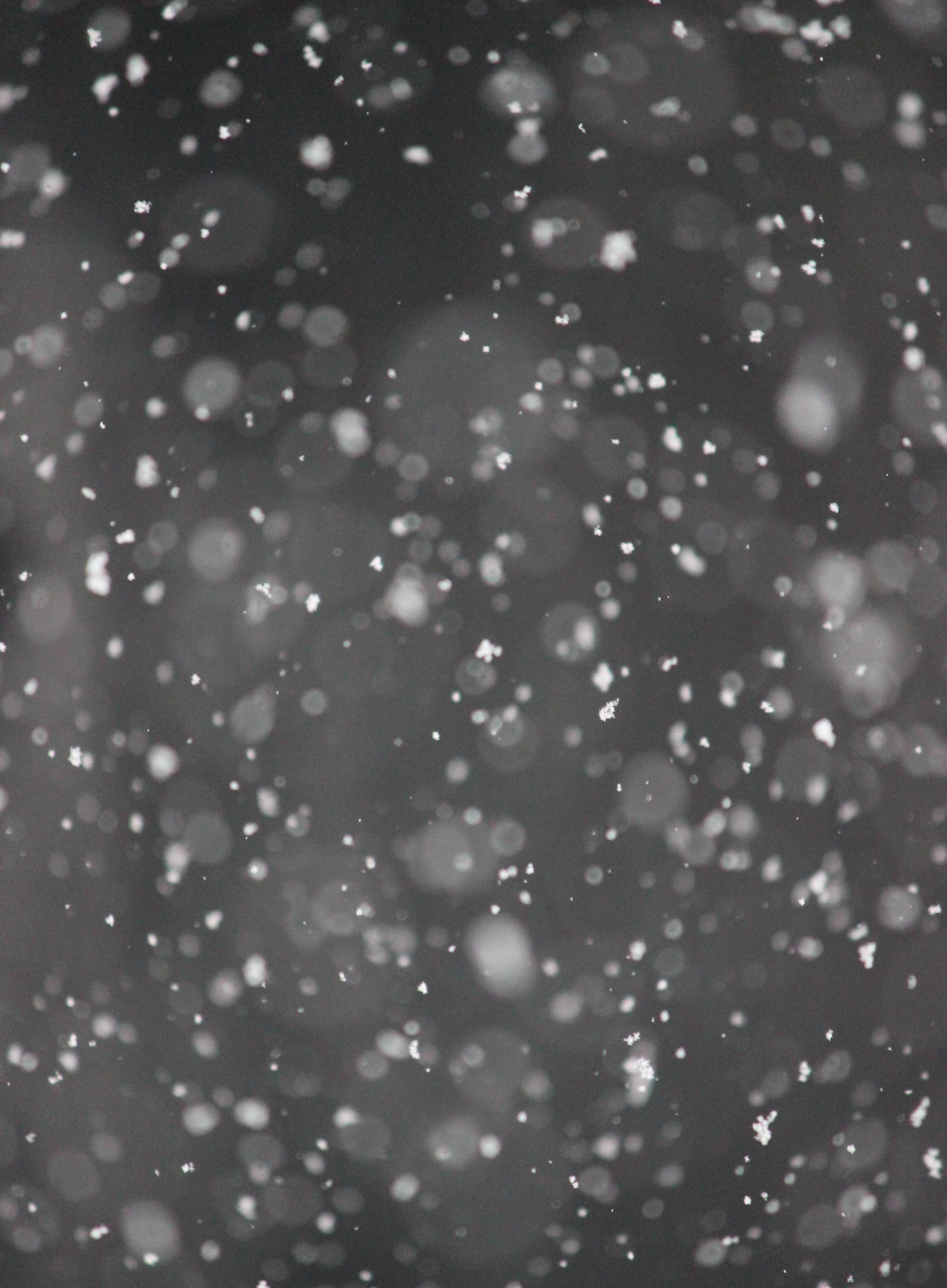
December 2O22 Photos 28
Andrew Edwards
Anna Miliotes
Andrew Edwards
Andrew Edwards





























 Article by Laziza Talipova
Photo by Olivia Prince
Article by Laziza Talipova
Photo by Olivia Prince


























































 Article by Jack Aaron Graphic by Austin Yuan
Article by Jack Aaron Graphic by Austin Yuan























 Article by Mila Taylor Graphic by Caden Liu
Article by Mila Taylor Graphic by Caden Liu















 -
-
































































































































































































































































































 Article by Amanda Rose DeStefano Graphic courtesy of Kelsey Wang
Article by Amanda Rose DeStefano Graphic courtesy of Kelsey Wang


 Photo by Anna Miliotes
Photo by Anna Miliotes






































